“My guitar is not a thing,” Joan Jett famously stated. “It is an extension of myself. It is who I am.” This sentiment resonates deeply within the world of music, as the guitar stands as a universal instrument, primal in its appeal and profoundly expressive. While anyone can quickly grasp the basics, a lifetime is spent mastering its boundless potential. This endless exploration is what makes the debate about the Top Guitar Players Of All Time so captivating.
Rolling Stone’s initial list of the 100 Greatest Guitarists in 2011, curated by a panel of veteran musicians, primarily classic rockers, sparked considerable discussion. Now, this newly expanded list, compiled by the editors and writers of Rolling Stone, reaches 250, aiming to present a more comprehensive view of guitar artistry.
Guitar players often attain iconic status, rivaling even the lead singers of their bands in fame. While legendary figures like Jimmy Page, Brian May, and Eddie Van Halen represent the mythic “guitar gods,” this list seeks to showcase the vast spectrum of guitar evolution. Spanning from folk music pioneer Elizabeth Cotten, born in 1893, to indie-rock innovator Lindsey Jordan, born in 1999, the selection encompasses a rich tapestry of genres. Rock, jazz, reggae, country, folk, blues, punk, metal, disco, funk, bossa nova, bachata, Congolese rumba, flamenco, and more are all represented. The list honors both unparalleled virtuosos like Pat Metheny, Yvette Young, and Steve Vai, and raw, primal players like Johnny Ramone and Poison Ivy of the Cramps. It celebrates mainstream stars such as Prince, Joni Mitchell, and Neil Young, alongside unsung heroes like Memphis soul maestro Teenie Hodges and smooth-rock stylist Larry Carlton.
Recognizing the power of collaboration, the list also acknowledges great guitar duos, featuring pairs like Kim and Kelley Deal of the Breeders and Adrian Smith and Dave Murray of Iron Maiden, among other synergistic partnerships. The primary criterion for inclusion was playing a six-string guitar, celebrating the masters of this iconic instrument.
In assembling this list of top guitar players, Rolling Stone prioritized impact over technical perfection, emotional depth over mere skill, innovation over imitation, and originality over refinement. Crucially, emphasis was given to artists who channeled their unique gifts into crafting exceptional songs and groundbreaking albums, rather than solely focusing on impressive instrumental prowess.
As modern blues visionary Gary Clark Jr. aptly put it, “I don’t know if I want to get too far off the path — I don’t want to get lost in the forest — but I like to wander out a bit and adventure.” This spirit of exploration and innovation defines many of the guitarists celebrated in this list of top guitar players of all time.
Andy Summers
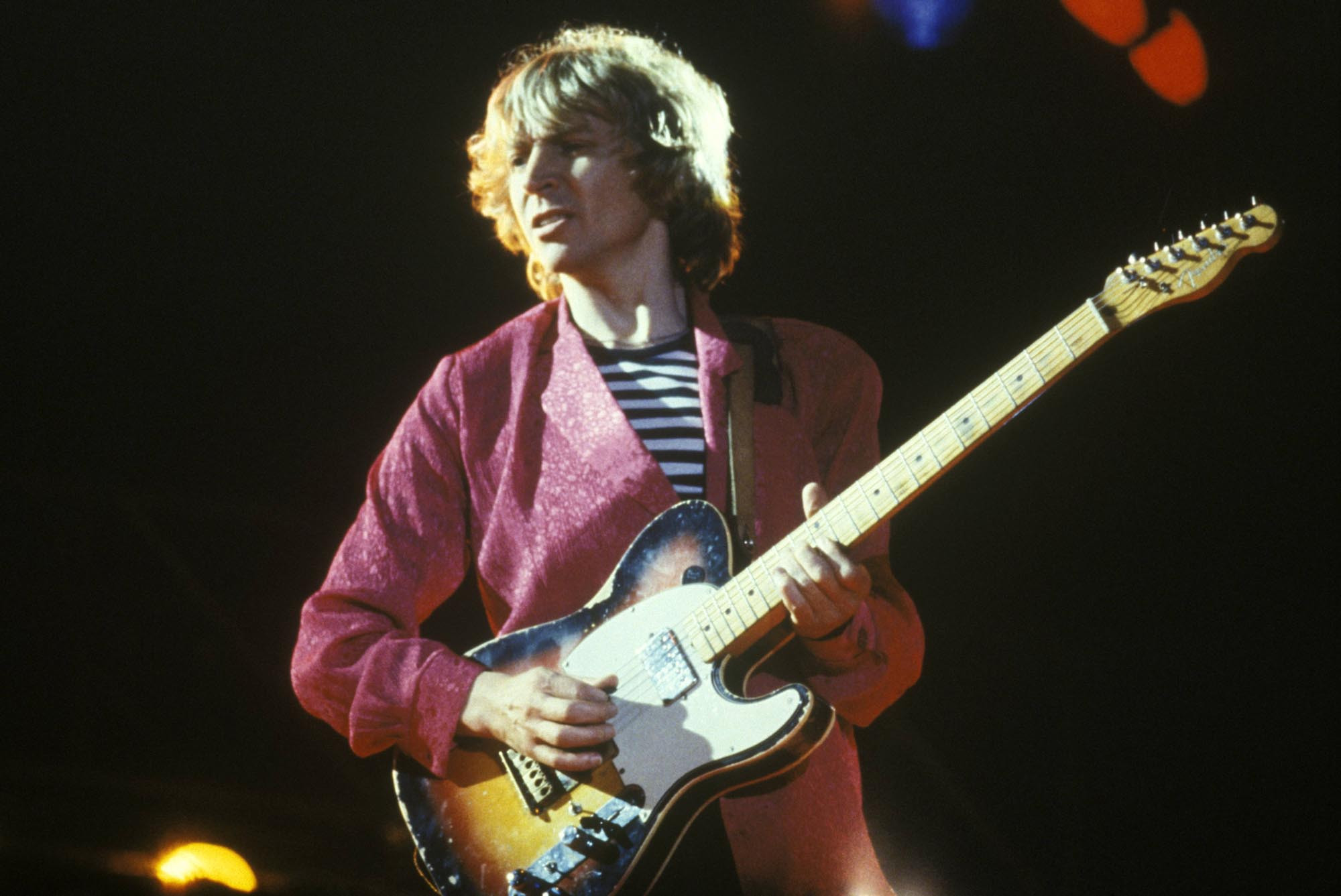 Andy Summers performing live onstage with The Police, playing Fender Telecaster guitar
Andy Summers performing live onstage with The Police, playing Fender Telecaster guitar
Image Credit: Graham Wiltshire/Redferns/Getty Images
The Police redefined the power trio format, largely due to Andy Summers’ distinctive guitar work. Moving beyond punk’s confines, he fused jazz chord voicings and reggae rhythms into propulsive rock and roll. Summers’ minimalist approach, characterized by clipped, twitchy riffs and dub-inspired sonic washes, provided ample space for Sting’s vocals and Stewart Copeland’s drumming. Alex Lifeson of Rush lauded Summers’ “absolutely perfect” tone and style, noting his ability to seamlessly transition between “beautiful acoustic playing to jazz to hybrid kinds of stuff.” His innovative style firmly places him among the top guitar players.
Key Tracks: “Message in a Bottle,” “Every Breath You Take”
Brittany Howard
 Brittany Howard of Alabama Shakes, soulful guitarist and vocalist
Brittany Howard of Alabama Shakes, soulful guitarist and vocalist
Image Credit: Sacha Lecca for Rolling Stone
From her beginnings with garage-roots band Alabama Shakes, Brittany Howard’s guitar playing has been a raw, organic, and wonderfully spontaneous complement to her powerful vocals and soulful songwriting. Her rhythmic sensibility is remarkably elastic, exemplified by the interplay between her jagged guitar lines and Heath Fogg’s lead guitar on the 2015 track “Don’t Wanna Fight.” Howard’s versatility extends to straight-ahead rock & roll with her side project Thunderbitch, and her 2019 solo album, Jaime, showcased her expansive musicianship, ranging from the funky, James Brown-influenced rhythms of “History Repeats” to the molten fuzz textures of “Presence.” Her dynamic range and soulful approach solidify her place as one of the top guitar players to watch.
Key Tracks: “History Repeats,” “Presence”
Robby Krieger
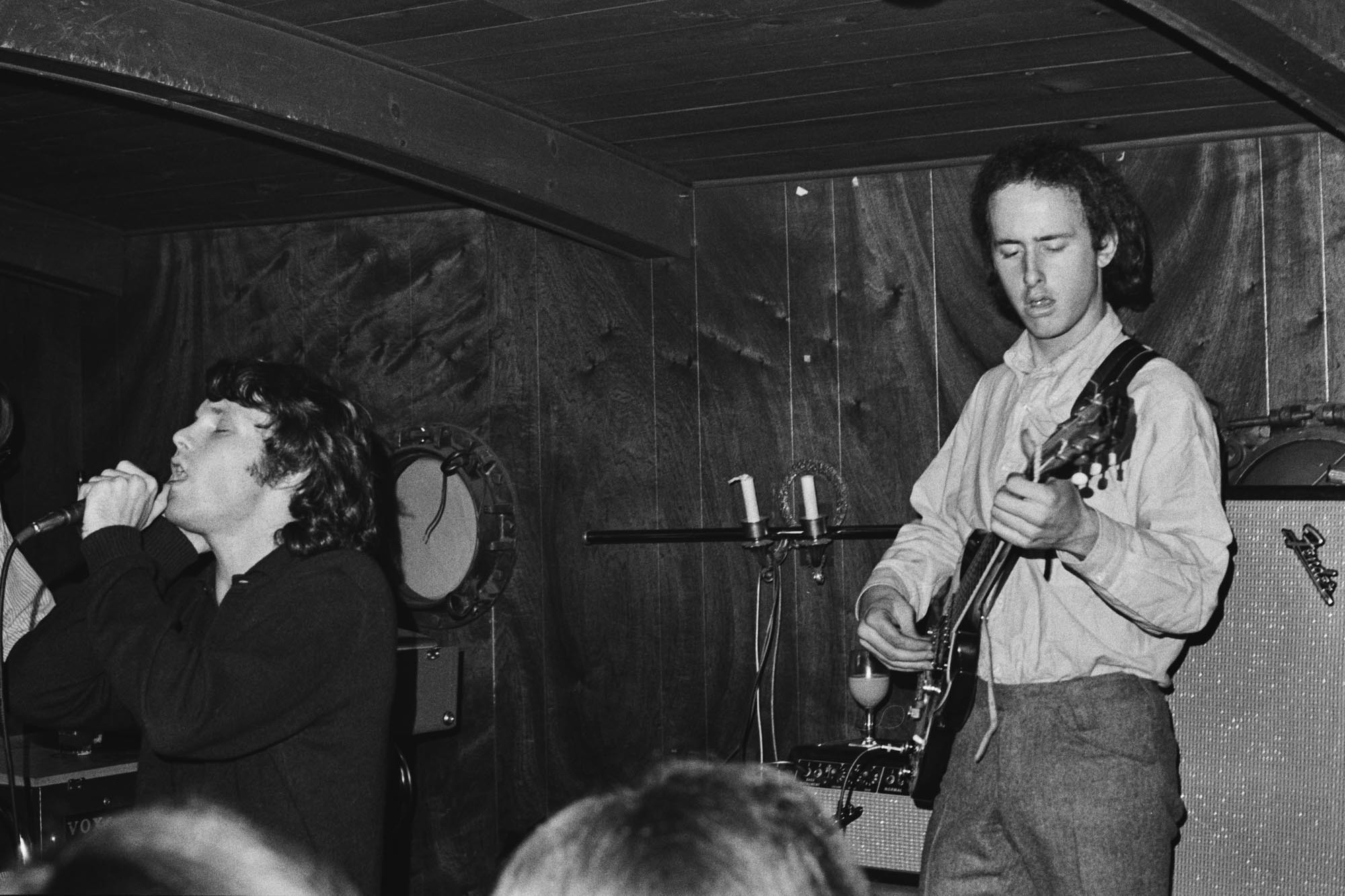 Robby Krieger of The Doors performing in 1966, innovative rock guitarist
Robby Krieger of The Doors performing in 1966, innovative rock guitarist
Image Credit: Don Paulsen/Michael Ochs Archives/Getty Images
Grounded in flamenco and jazz, Robby Krieger transcended rock conventions when many guitarists remained rooted in blues traditions. With The Doors, his improvisational skills seamlessly supported Jim Morrison’s unpredictable performances. Krieger penned some of their biggest hits, including “Light My Fire,” and effectively filled the sonic space in their unique keyboard-drums-guitar lineup. He explained that the absence of a bass player led him to incorporate more bass notes, enriching the lower frequencies, and the lack of a rhythm guitarist prompted him to play differently, aiming for a fuller sound, essentially performing the roles of “three players simultaneously.” Krieger’s unique approach and songwriting contributions cement his legacy among the top guitar players of his era.
Key Tracks: “Riders on the Storm,” “Roadhouse Blues”
Ricky Wilson
 Ricky Wilson of The B-52s performing live in 1978, inventive New Wave guitarist
Ricky Wilson of The B-52s performing live in 1978, inventive New Wave guitarist
Image Credit: Tom Hill/WireImage
In the B-52s’ live shows, Ricky Wilson often appeared to be a quiet presence amidst the flamboyant energy of Fred Schneider and the captivating stage personas of Kate Pierson and Cindy Wilson. However, his distinctive blend of country-tinged “chicken scratch,” angular post-punk riffs, rockabilly energy, and surf rock vibes on classics like “52 Girls,” “Strobe Light,” and “Private Idaho” marked him as a uniquely inventive guitarist of the New Wave era. Wilson frequently utilized only four or five strings on his blue Mosrite guitar and employed unconventional tunings to achieve his signature strange, sparse sound. He famously stated, “I just tune the strings till I hear something I like.” His untimely death in 1985 marked the loss of an unassuming but radical figure in the indie-rock scene, and a truly original top guitar player.
Key Tracks: “52 Girls,” “Mesopotamia”
Paul Simon
 Paul Simon playing guitar onstage in 1980, masterful folk-pop guitarist
Paul Simon playing guitar onstage in 1980, masterful folk-pop guitarist
Image Credit: Paul Natkin/Getty Images
Paul Simon, renowned for his lyrical genius, expresses himself just as eloquently through his guitar. Influenced by early doo-wop and rock & roll, Simon embraced the folk revival in the mid-Sixties, traveling to England to study acoustic guitar mastery with Bert Jansch. He has consistently absorbed new musical influences, evident in tracks like “Dazzling Blue” from his album So Beautiful or So What. He describes the track as building upon his Simon and Garfunkel-era folk fingerpicking but layered “on top of this rhythm with Indian musicians playing in 12/8.” Even in his 80s, his guitar skills remain sharp, as demonstrated on his 2023 album Seven Psalms. Simon’s evolution and enduring skill place him among the top guitar players across genres.
Key Tracks: “Dazzling Blue,” “Kathy’s Song”
Leslie West
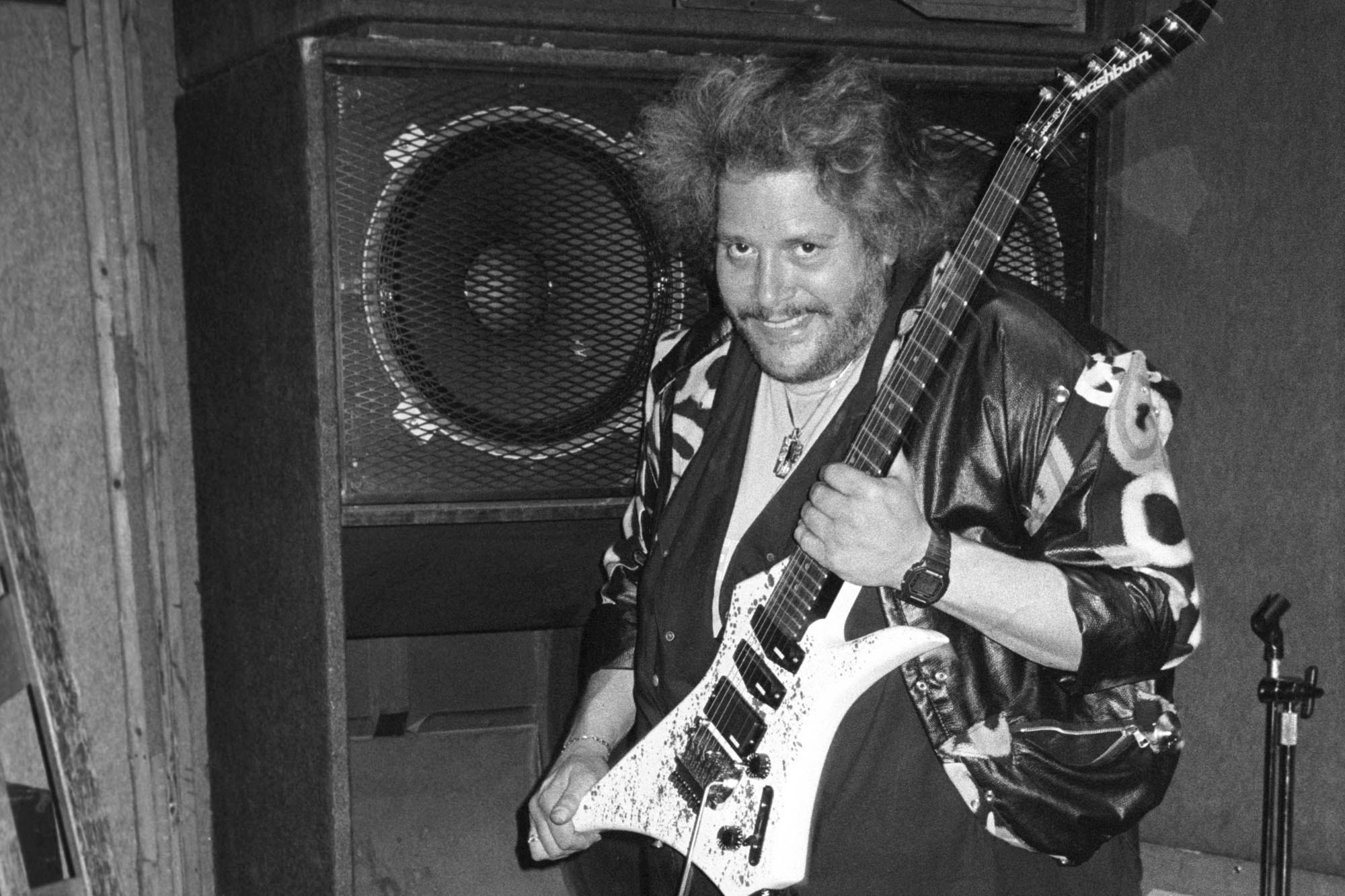 Leslie West of Mountain performing in the 1970s, heavy blues-rock guitarist
Leslie West of Mountain performing in the 1970s, heavy blues-rock guitarist
Image Credit: Erica Echenberg/Redferns/Getty Images
Leslie West (born Leslie Weinstein) initially gained recognition in mid-Sixties garage rock with the Vagrants’ powerful rendition of Otis Redding’s “Respect.” By 1969, West became the driving force in the Cream-inspired quartet Mountain. On hits like “Mississippi Queen” (1970), West delivered raw blues lines with surprising dexterity and an R&B sensibility, all amplified through heavily distorted tones. Dave Davies noted West’s “incredible riffs” and ability to play “flashy, intricate phrases,” but emphasized that “he wasn’t a look-at-me guy. He played with feel.” West’s powerful riffs and emotive playing make him a standout among top guitar players in rock.
Key Tracks: “Mississippi Queen,” “Nantucket Sleighride (To Owen Coffin)”
Edilio Paredes
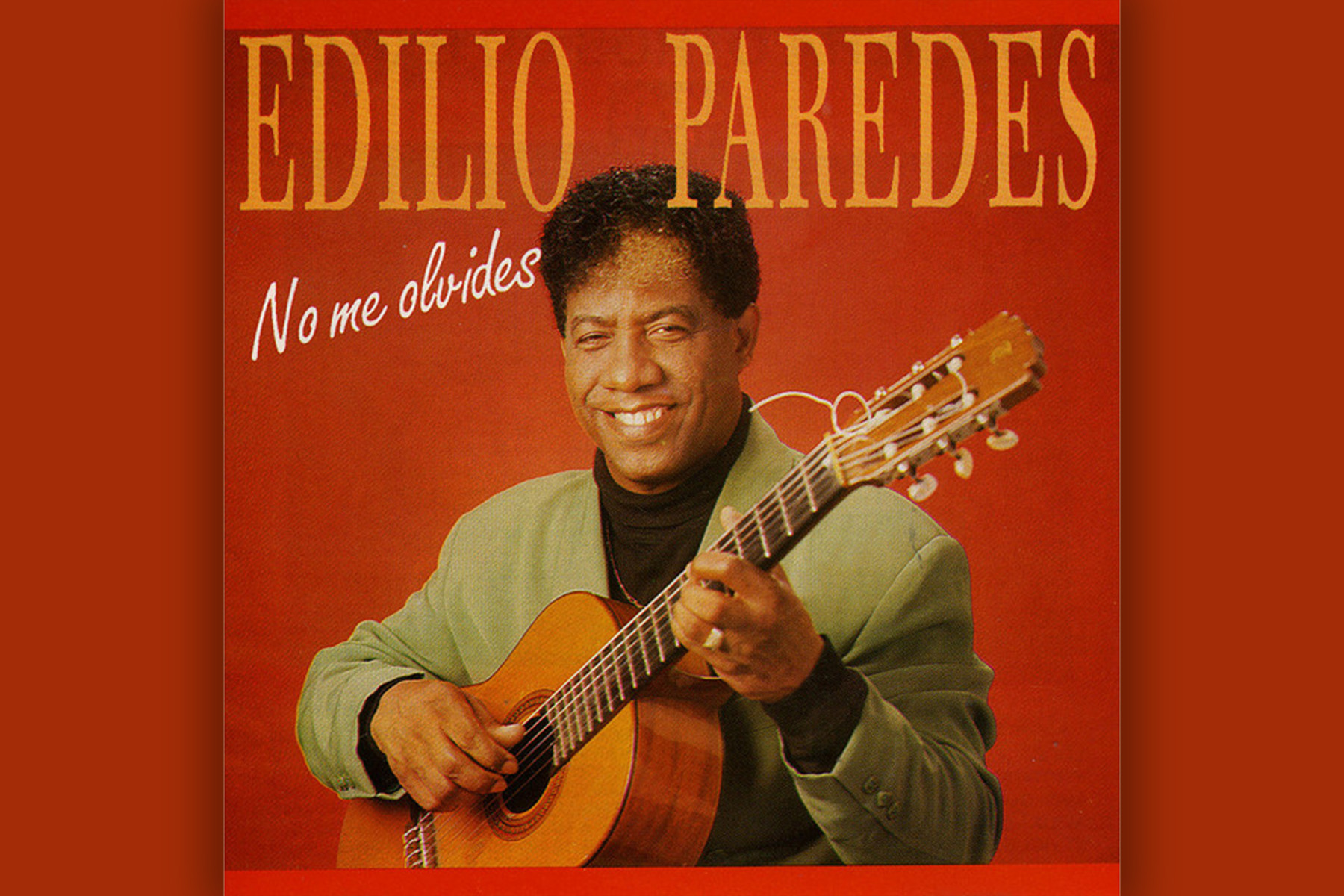 Edilio Paredes, father of bachata guitar
Edilio Paredes, father of bachata guitar
Edilio Paredes is the architect of bachata’s distinctive guitar sound – those evocative, spiraling lines that accentuate the genre’s themes of lost love. This became globally recognized thanks to artists like Rosalía and the Weeknd. A self-taught prodigy, Paredes was instrumental in transforming bolero campesino into contemporary bachata. This Afro-Caribbean genre achieved international prominence in the Nineties. Paredes’ extensive discography as a session musician from the 1960s to 1980s speaks volumes. His legacy was further cemented by his appearance on the acclaimed 2011 album The Bachata Legends. As the originator of a genre-defining sound, Paredes is undoubtedly one of the top guitar players in Latin music.
Key Tracks: “No Me Olvides,” “Bendita Nena”
Aaron Dessner and Bryce Dessner
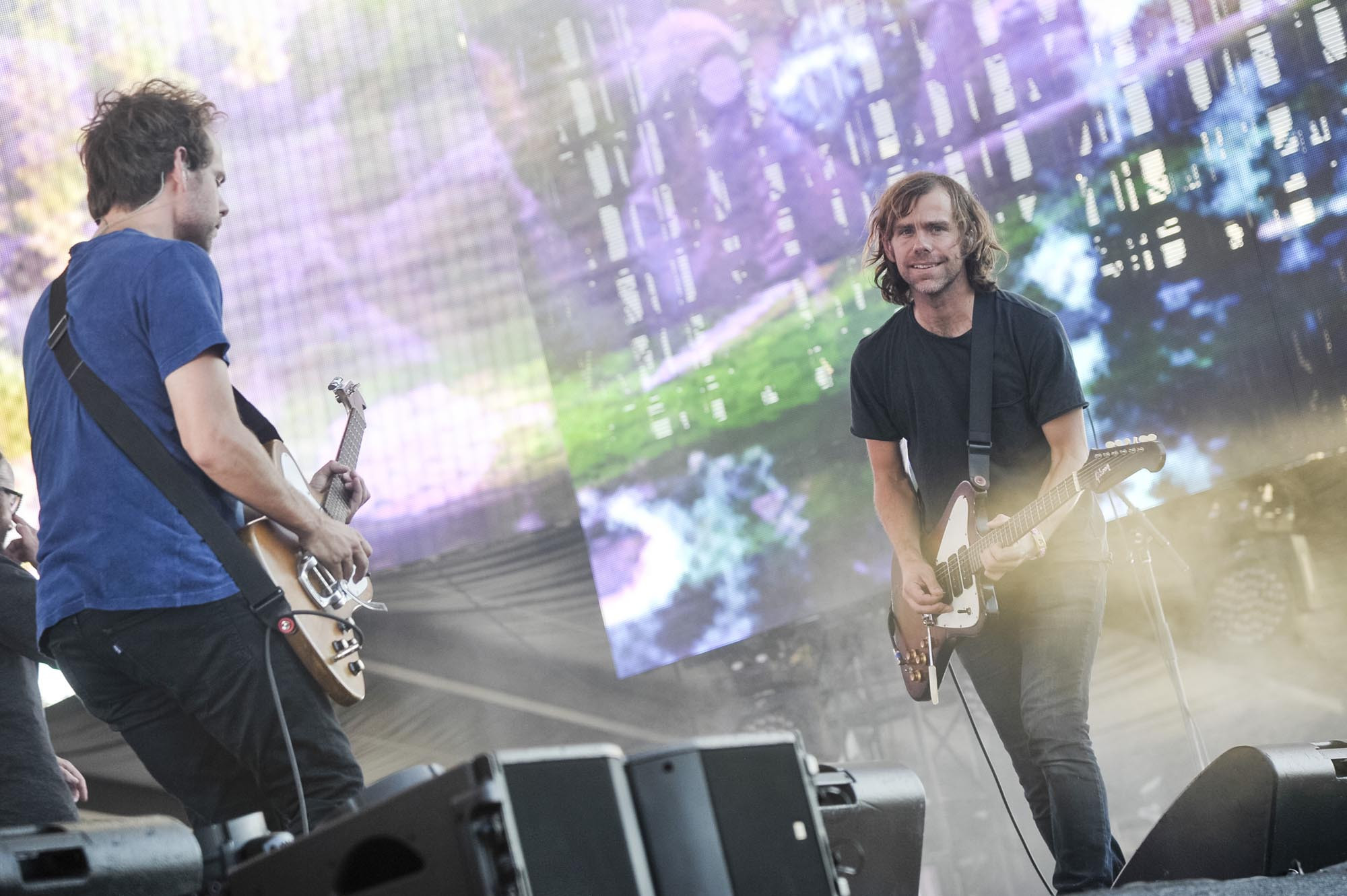 Aaron and Bryce Dessner of The National performing in 2016, innovative twin guitarists
Aaron and Bryce Dessner of The National performing in 2016, innovative twin guitarists
Image Credit: Kris Connor/FilmMagic
The National’s unique sound is built upon the virtuosic twin-guitar work of brothers Aaron and Bryce Dessner. Bryce Dessner’s collaborations include work with Steve Reich, Ryuichi Sakamoto, Jonny Greenwood, and Kronos Quartet, showcasing his range beyond rock. Aaron Dessner is Taylor Swift’s key guitar collaborator on Folklore and Evermore, adding Jerry Garcia-esque twang to tracks like “Cowboy Like Me” and unleashing raw energy on “August” in The Long Pond Studio Sessions. Together, the Dessner brothers create both electric intensity (“Terrible Love”) and intimate folk beauty (“I Need My Girl”). They also curated the celebrated 2016 Grateful Dead tribute album Day of the Dead, jamming with Bob Weir on “I Know You Rider.” Their diverse talents and collaborative spirit place them among the top guitar players in contemporary music.
Key Tracks: “Mr. November,” “Bloodbuzz Ohio,” “The System Only Dreams in Total Darkness”
Lindsey Jordan
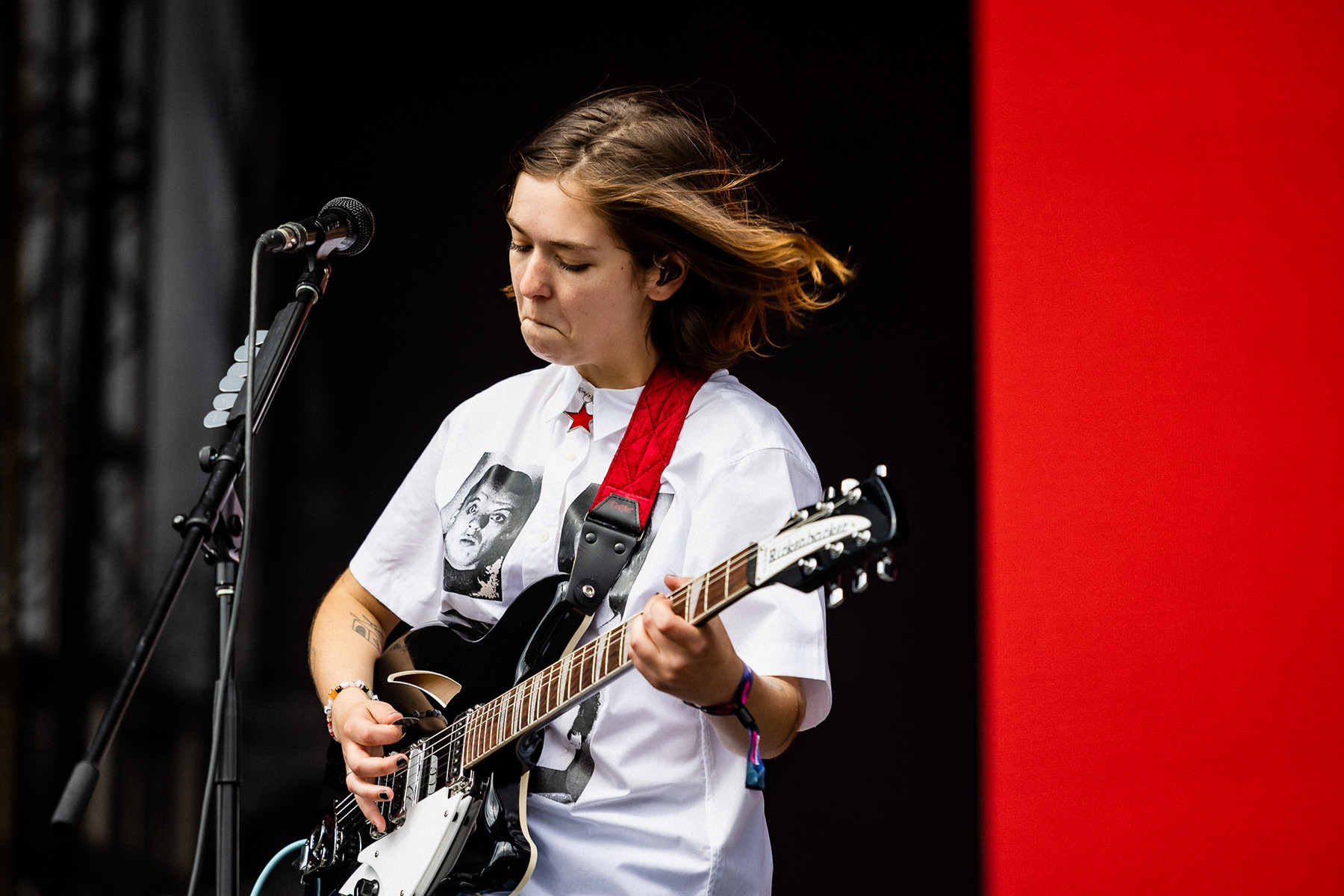 Lindsey Jordan of Snail Mail performing in 2023, Gen Z guitar hero
Lindsey Jordan of Snail Mail performing in 2023, Gen Z guitar hero
Image Credit: Griffin Lotz for Rolling Stone
Lindsey Jordan, a Gen Z guitar icon known as Snail Mail, studied under Mary Timony of Helium and Wild Flag, another guitarist on this list. Her debut album Lush in 2018, released when Jordan was just 18, demonstrated a deep understanding of indie-rock history. She is a natural virtuoso, effortlessly transitioning from strummed, tense passages to explosive solos, moving between cool, Liz Phair-esque lo-fi sounds and Sonic Youth-inspired expansiveness. In a 2018 Rolling Stone interview, she stated, “I like to play really balls out. That’s what it means to be onstage with integrity.” Jordan’s youthful virtuosity and dynamic stage presence mark her as one of the top guitar players of her generation.
Key Tracks: “Heat Wave,” “Pristine”
Keith Urban
 Keith Urban performing in 2001, effortless country guitar stylist
Keith Urban performing in 2001, effortless country guitar stylist
Image Credit: Frank Micelotta/Getty Images
Keith Urban, while not the most technically flashy or traditionally country guitarist, distinguishes himself in Nashville with his seemingly effortless style. His riffs, rhythms, and solos emerge organically, enhancing each song without overt displays of virtuosity. Both “Highway Don’t Care” and “Blue Ain’t Your Color” exemplify his studio brilliance. However, Urban truly shines live, delivering guitar heroics comparable to rock’s greatest. This versatility has led to collaborations with artists ranging from the Rolling Stones to Nile Rodgers. Urban told Rolling Stone in 2015, “I love that people want to hear the guitar, but I just think about the song … whatever the song seems to want.” His song-centric approach and live guitar prowess place him among the top guitar players in country and rock crossover.
Key Tracks: “Highway Don’t Care,” “Blue Ain’t Your Color”
Erin Smith
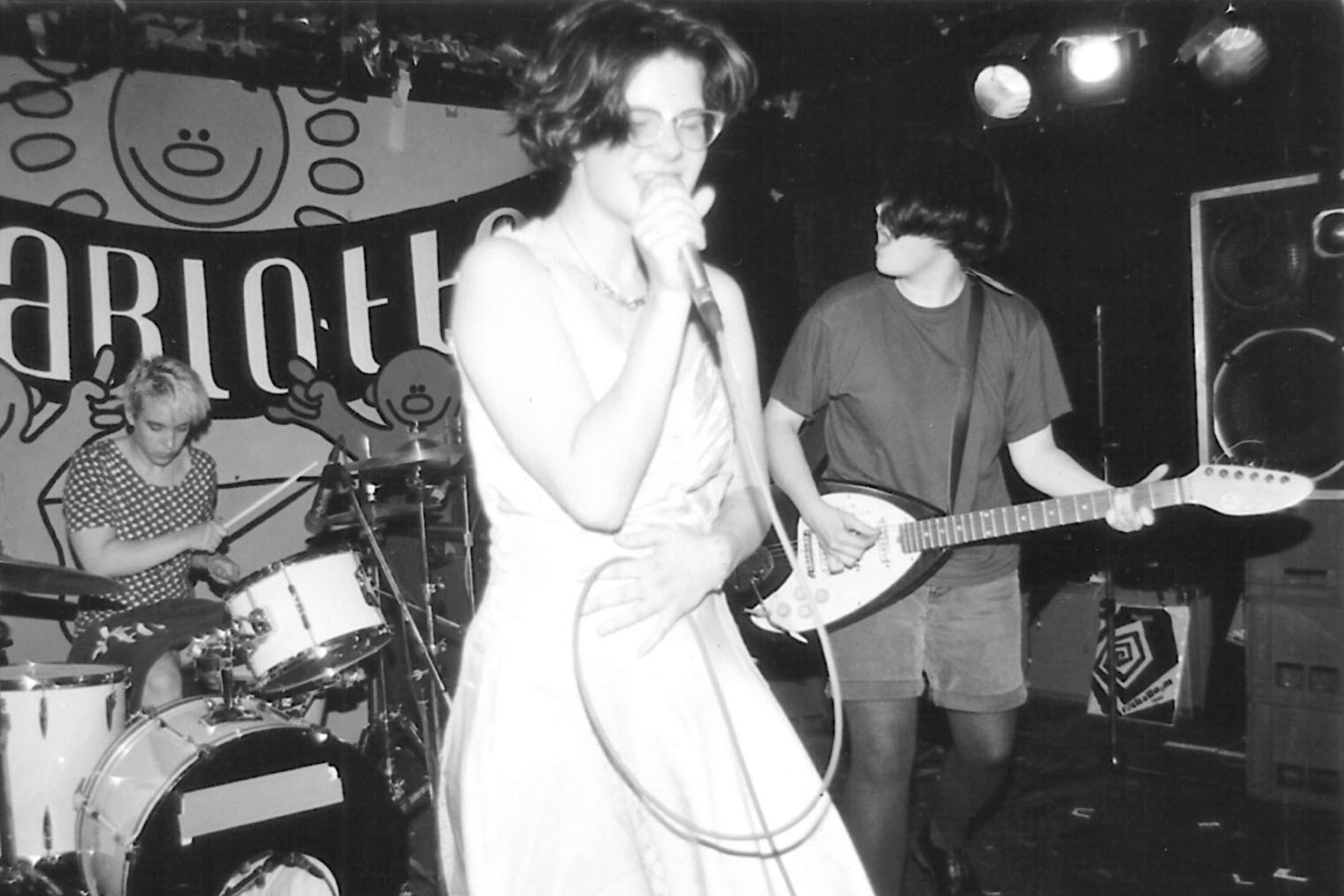 Erin Smith of Bratmobile performing, riot grrrl guitar pioneer
Erin Smith of Bratmobile performing, riot grrrl guitar pioneer
Image Credit: © Greg Neate/neatephotos.com/flickr CC BY 2.0
Erin Smith of riot grrrl band Bratmobile was inspired to play after seeing Beat Happening, a band with a woman drummer, demonstrating accessibility and DIY ethos. She told the Museum of Pop Culture, “That was in ’87, and not only did I see women could play music, but I could see that just you could do it yourself. I could never be [Duran Duran’s] Andy Taylor. And I realized that was OK.” Her style, developed with singer Allison Wolfe and drummer Molly Neuman, combined melodic surf-rock basslines with raw garage-rock chords. This defined Bratmobile’s 1993 debut, Pottymouth, a landmark punk record of the Nineties. Smith’s pioneering spirit and impactful style make her a significant figure among top guitar players in punk and indie music.
Key Tracks: “Love Thing,” “P.R.D.C.T.”
Duane Eddy
 Duane Eddy posing in 1958, pioneer of twangy guitar sound
Duane Eddy posing in 1958, pioneer of twangy guitar sound
Image Credit: PoPsie Randolph/Michael Ochs Archives/Getty Images
In the late 1950s, Duane Eddy solidified the guitar as rock & roll’s lead instrument, surpassing the saxophone in prominence. His 1958 single “Rebel Rouser,” with its country twang and tremolo-laden sound, is a prime example. Dave Davies of the Kinks noted, “Chet Atkins used vibrato in a selective way — Duane Eddy used it to thrash the music.” Eddy’s hits like “Forty Miles of Bad Road” and “Peter Gunn” profoundly influenced surf music and guitarists such as Jeff Beck and George Harrison. Eddy’s innovative use of tremolo and twang established him as one of the top guitar players in early rock and roll.
Key Tracks: “Rebel Rouser,” “Peter Gunn”
Doug Gillard
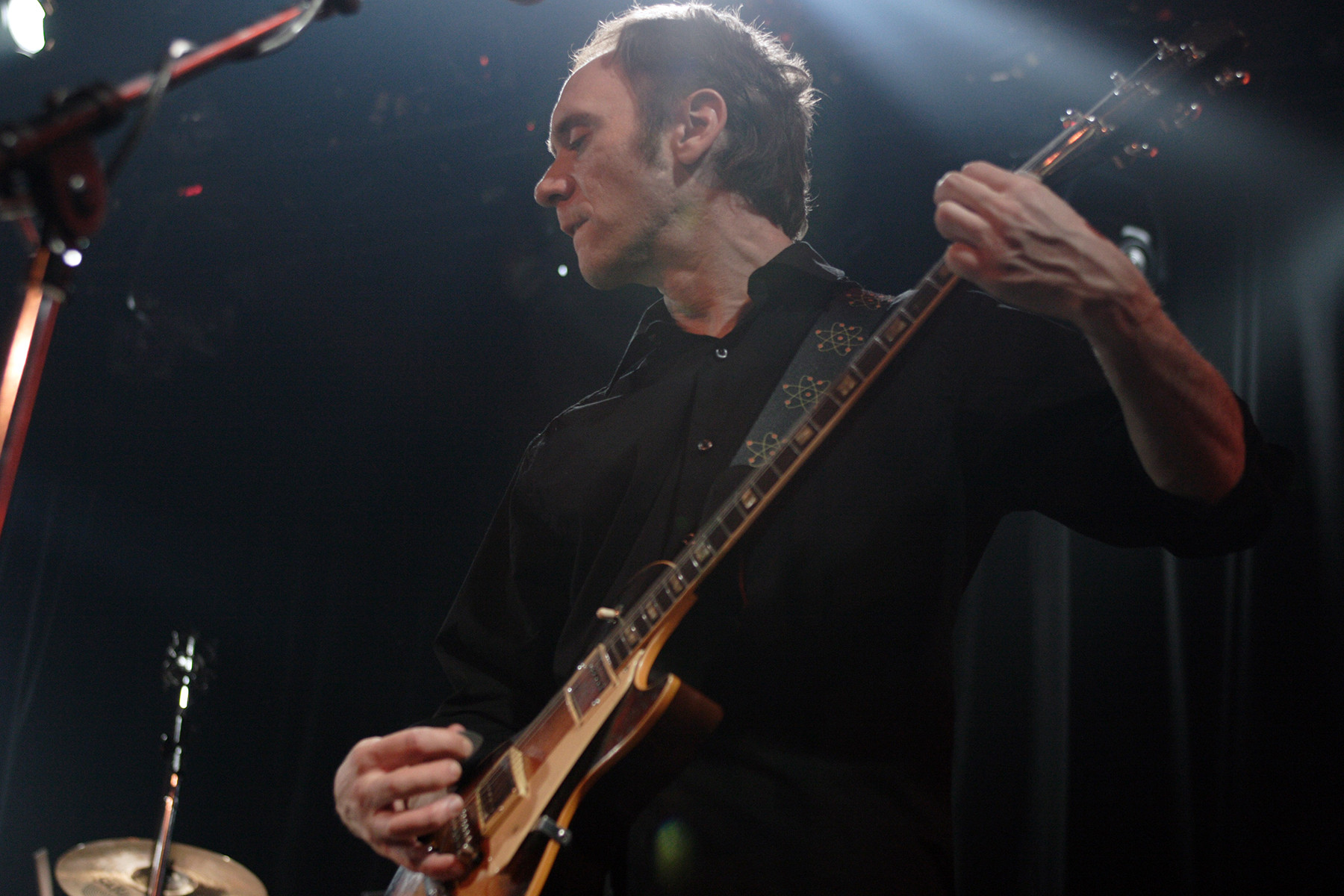 Doug Gillard of Guided By Voices performing in 2004, indie rock guitar heart
Doug Gillard of Guided By Voices performing in 2004, indie rock guitar heart
Image Credit: Matt Carmichael/Getty Images
Doug Gillard is the musical core of Guided By Voices, complementing Robert Pollard’s eccentric genius. He transforms Pollard’s wordplay and experimental sounds into cohesive rock and roll, maintaining a prolific output of two to three albums per year. Gillard described his process: “I know his usual shapes and drones — or can pretty much decipher what they are if it’s a new shape — and replicate them on the rhythm parts on the records for the most part. But also, I have some freedom to transform them.” His ability to structure and enhance Pollard’s vision makes him a crucial, if unsung, top guitar player in indie rock.
Key Tracks: “I Am a Tree,” “Mr. Child”
Jennifer Batten
Image Credit: Catherine McGann/Getty Images
Jennifer Batten rose to prominence as Michael Jackson’s dynamic guitarist, famed for her lion’s mane hair and virtuosic playing on his world tours. Her role demanded mastery of funk, soul, metal, and even Eddie Van Halen’s “Beat It” solo, performed nightly. Her 1992 solo debut, Above Below and Beyond, showcased her range, featuring renditions of Rimsky-Korsakov’s “Flight of the Bumble Bee,” Jackson’s “Wanna Be Startin’ Somethin’,” and John Coltrane’s “Giant Steps” on electric guitar, replete with whammy bar techniques and finger-tapping. She later collaborated extensively with Jeff Beck, touring and recording on his adventurous albums, proving herself as one of the few guitarists capable of matching his brilliance. Batten’s versatility and technical prowess firmly place her among the top guitar players in rock and beyond.
Key Tracks: “Flight of the Bumblebee,” “Giant Steps (Rock Version)”
Greg Sage
 Greg Sage of The Wipers performing in 1986, pioneering punk guitarist
Greg Sage of The Wipers performing in 1986, pioneering punk guitarist
Image Credit: Frans Schellekens/Redferns/Getty Images
Greg Sage formed the Wipers in Portland, Oregon, in 1977, defying punk conventions with complex, expansive songs and a raw, distorted guitar sound. At a time when punk valued simplicity, Wipers songs like “When It’s Over” and “Romeo” created immersive soundscapes. This innovative approach galvanized the Pacific Northwestern indie-rock scene. Kurt Cobain cited the Wipers as his favorite band, stating, “We learned everything from the Wipers. They were playing a mix of punk and hard rock when nobody cared.” Sage’s pioneering sound and influence on grunge solidify his place as one of the top guitar players in punk and indie rock history.
Key Tracks: “When It’s Over,” “Up Front”
Laura Marling
Image Credit: Chiaki Nozu/WireImage
Laura Marling, a British singer-songwriter, is a subtle virtuoso, employing complex tunings and voicings that sound deceptively simple. “I Was an Eagle” from her 2013 album One I Was an Eagle, achieves a dreamy atmosphere through DADDAD tuning, echoing the influence of Joni Mitchell in her phrasing and atonal touches. During the Covid-19 lockdown, Marling shared her guitar expertise with fans through concise Instagram tutorials. Her sophisticated yet understated guitar work marks her as one of the top guitar players in contemporary folk and indie music.
Key Tracks: “I Was an Eagle,” “Wild Fire,” “Ghosts”
John McGeoch
 John McGeoch of Siouxsie and the Banshees performing in 1980, goth guitar innovator
John McGeoch of Siouxsie and the Banshees performing in 1980, goth guitar innovator
Image Credit: Ebet Roberts/Redferns/Getty Images
John McGeoch made a powerful entrance with Magazine’s 1978 debut single, “Shot by Both Sides,” a punk anthem. He then developed a unique, expansive style with Magazine, Public Image Ltd, and Siouxsie and the Banshees. McGeoch earned high praise from Johnny Marr and Radiohead’s Ed O’Brien. His blend of rhythmic guitar, flanging effects, and swirling arpeggios on the Banshees’ 1981 album Juju defined goth guitar, emphasizing atmosphere over angst in UK rock. McGeoch’s innovative and atmospheric style places him among the top guitar players in post-punk and goth music.
Key Tracks: “Philadelphia,” “Spellbound”
H.E.R.
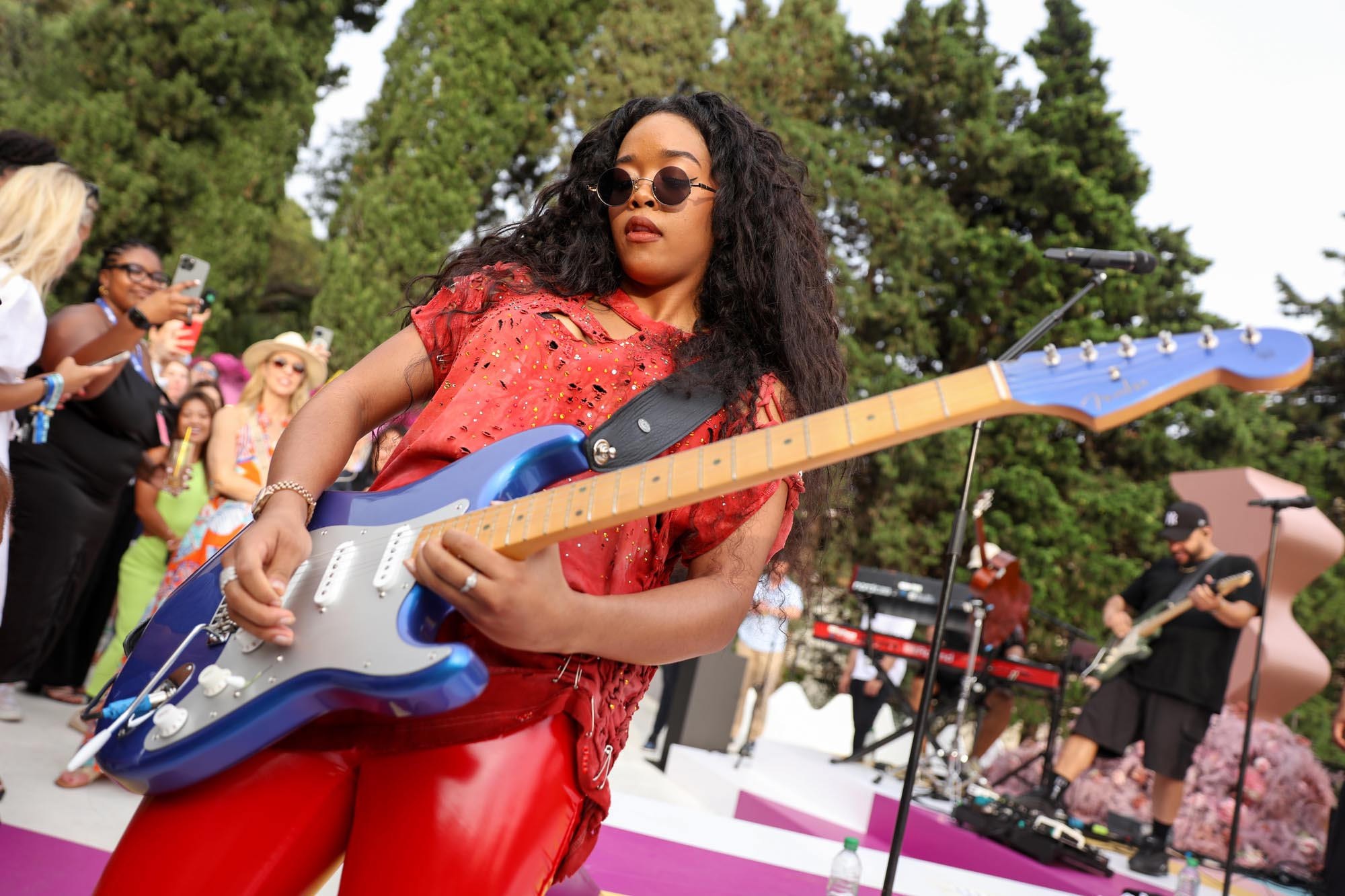 H.E.R. performing at Spotify event, R&B guitar prodigy
H.E.R. performing at Spotify event, R&B guitar prodigy
Image Credit: David M. Benett/Getty Images
H.E.R. consistently surprises audiences with her guitar skills during public appearances like the Grammys and Super Bowl. While her vocals are rooted in classic R&B, her guitar playing ranges from delicate accents to Prince-like rock shredding. Her single “Hold On” features her signature doubling of vocal melodies with soaring guitar leads. She told Guitar World, “I also like to play my guitar like I’m singing. Sometimes, I like to sing and play my solos at the same time … even harmonizing my voice with my guitar.” In 2021, Fender honored her with a signature Stratocaster, making her the first Black woman to receive this recognition. H.E.R.’s impressive range and vocal-guitar interplay solidify her status as one of the top guitar players in contemporary R&B.
Key Tracks: “Hold On,” “Comfortable”
David Williams
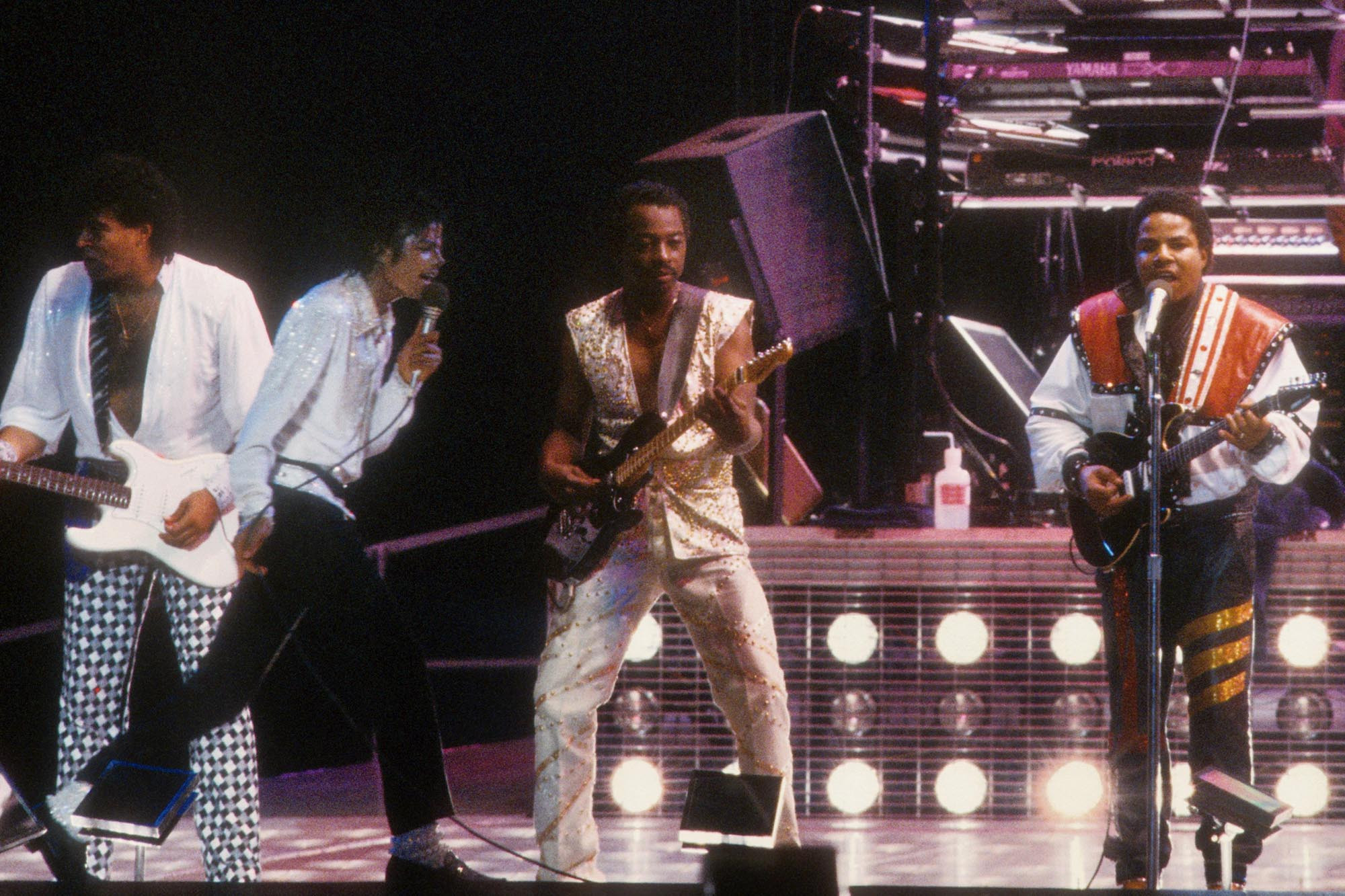 David Williams of The Jacksons performing in 1984, session guitar legend
David Williams of The Jacksons performing in 1984, session guitar legend
Image Credit: Michael Ochs Archive/Getty Images
Despite his jazz background, David Williams made his biggest impact on 80s pop. His minimalist guitar touches are crucial to the rhythmic allure of Michael Jackson’s “Billie Jean,” Stevie Nicks’ “Stand Back,” and Diana Ross’ “Muscles.” The Vietnam veteran, who also toured with Jackson and Madonna, worked with Chaka Khan and Kenny Loggins. He described his “secret spice” for Top 40 hits: “You don’t need much of it, but the right amount gets the job done.” Williams, who passed away in 2009, was a master of subtle but impactful guitar work, making him one of the top session guitar players of his era.
Key Tracks: “Billie Jean,” “Dirty Diana”
Etta Baker
 Etta Baker playing guitar, Piedmont blues legend
Etta Baker playing guitar, Piedmont blues legend
Image Credit: Timothy Duffy
Etta Baker is synonymous with Piedmont blues, a style influenced by ragtime and folk, originating on the East Coast in the early 20th century. Born in North Carolina in 1913, Baker learned guitar from her father and played at family dances. Her instrumental compositions like “One Dime Blues,” featured on a 1956 anthology, were highly influential, inspiring Bob Dylan and Taj Mahal, who later recorded an album with Baker. Her legacy continued until her death in 2006. Baker’s instrumental prowess and preservation of Piedmont blues tradition place her among the top guitar players in blues history.
Key Tracks: “One Dime Blues,” “Carolina Breakdown”
Gustavo Cerati
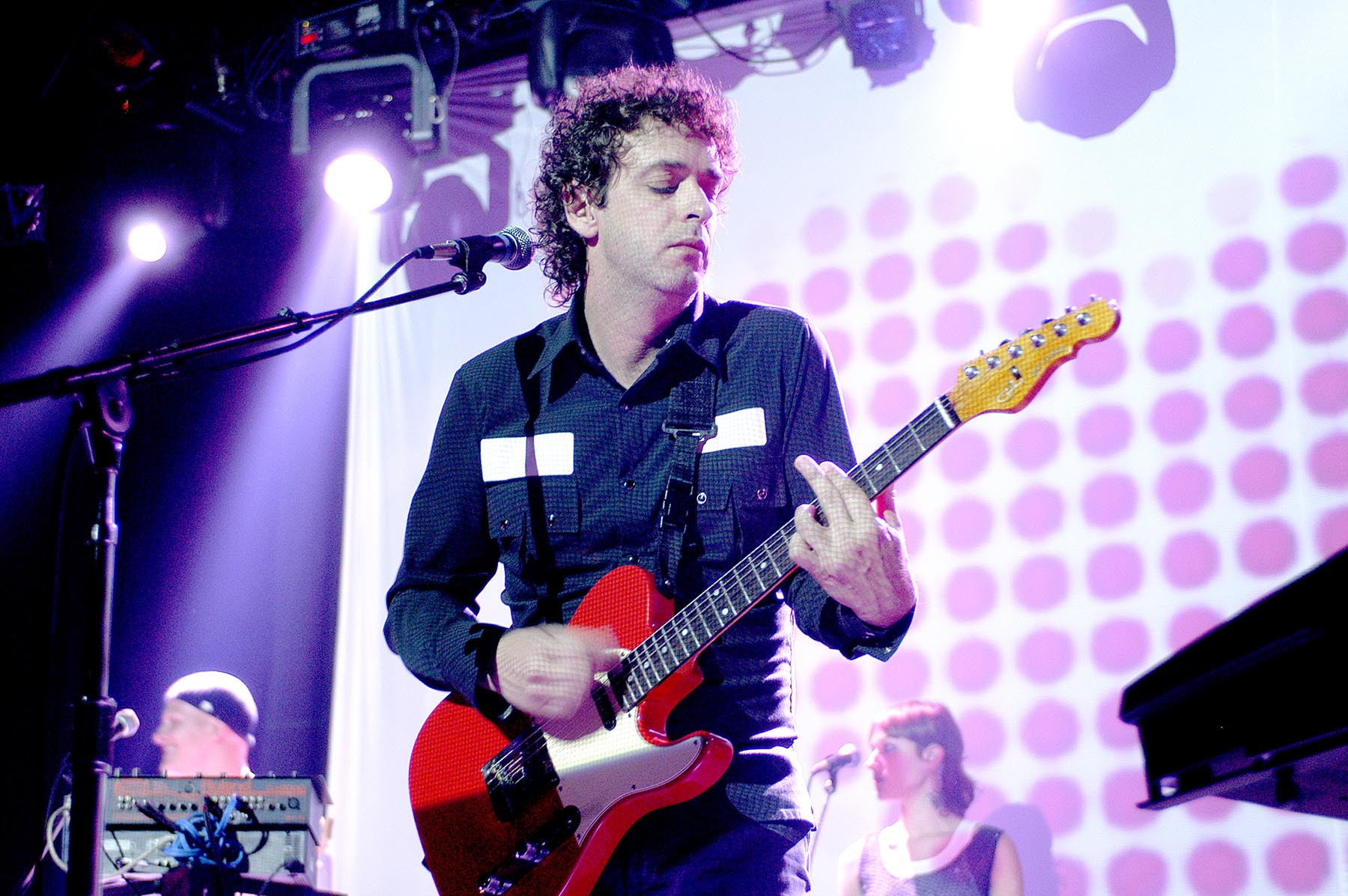 Gustavo Cerati performing in 2003, Latin rock icon
Gustavo Cerati performing in 2003, Latin rock icon
Image Credit: Paul Natkin/Getty Images
Gustavo Cerati transformed Latin rock with his songwriting and guitar skills. In the mid-Eighties, the Argentine singer-songwriter sparked a pan-American rock en español boom with Soda Stereo and anthems like “De Música Ligera.” After Soda Stereo disbanded, Cerati explored electronic music, but he returned to guitar-driven rock with 2006’s Ahí Vamos, featuring raw electric riffs. Cerati’s career was cut short by a coma at age 50, but his image of passionate guitar playing remains iconic in Latin music culture. Cerati’s impact on Latin rock and his guitar artistry make him one of the top guitar players in Latin music history.
Key Tracks: “Canción Animal,” “La Excepción”
Barbara Lynn
 Barbara Lynn posing in 1964, soulful left-handed guitarist
Barbara Lynn posing in 1964, soulful left-handed guitarist
Image Credit: Michael Ochs Archives/Getty Images
Sixteen-year-old Barbara Lynn warned her boyfriend in her 1962 R&B Number One hit, “You’ll Lose a Good Thing.” The Texas native wrote the song and played it on a right-handed guitar, self-taught for left-handed playing. This hit launched a 60-year career. Lynn’s self-penned songs have been covered by the Rolling Stones, Aretha Franklin, Otis Redding, and Robert Plant, and sampled by the Beastie Boys and Moby, highlighting the universal appeal of her songwriting and guitar work. Lynn’s soulful voice and unique guitar style place her among the top guitar players in R&B history.
Key Tracks: “You’ll Lose a Good Thing,” “I’ll Suffer”
Steve Jones
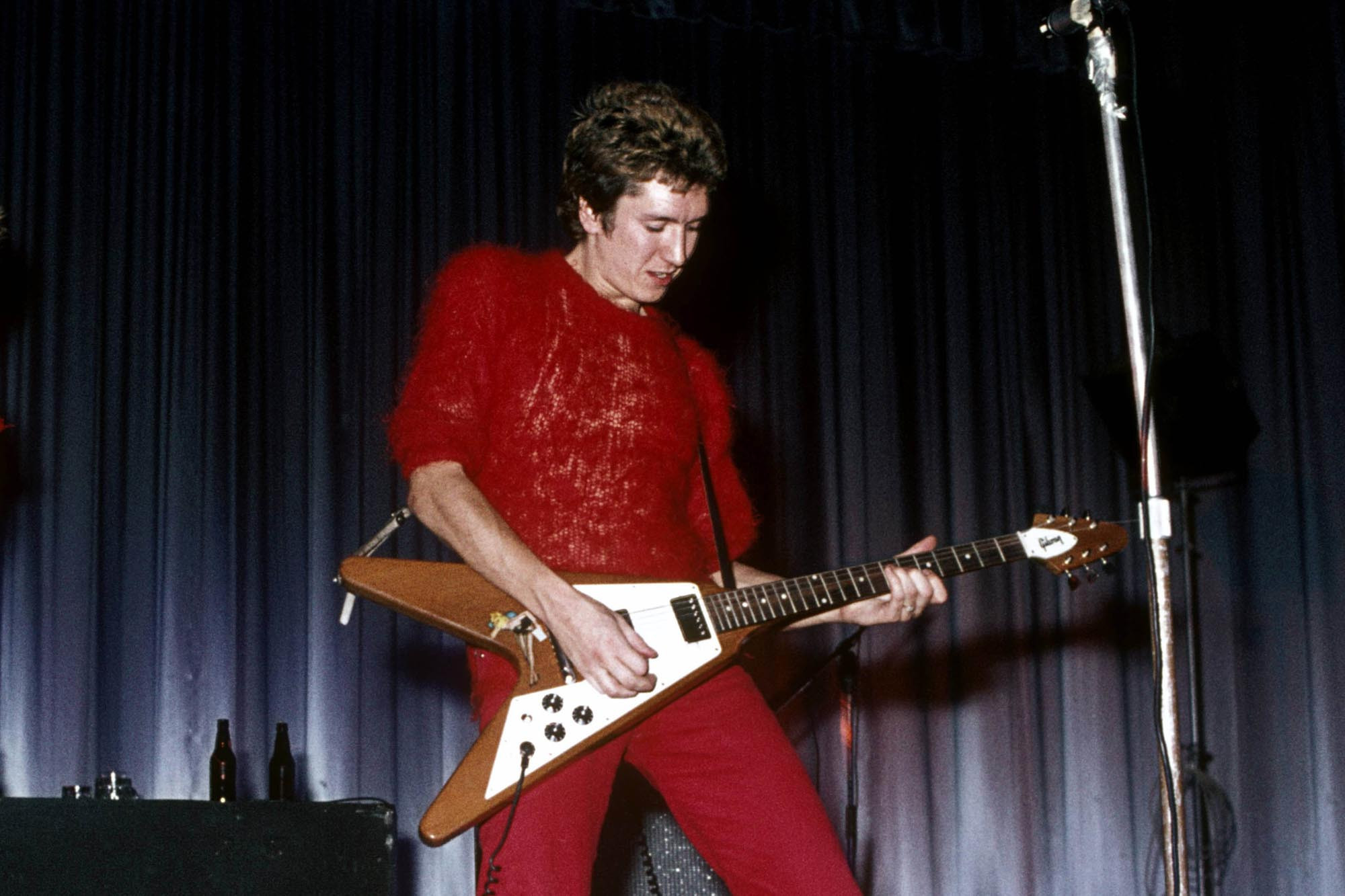 Steve Jones of Sex Pistols performing, punk rock riff master
Steve Jones of Sex Pistols performing, punk rock riff master
Image Credit: Chris Morphet/Redferns/Getty Images
Sex Pistols manager Malcolm McLaren gave Steve Jones a white Les Paul Custom once owned by Syl Sylvain of the New York Dolls, which became Jones’ signature instrument. Jones’ raw power chords and glam-influenced solos mirrored Johnny Rotten’s rebellious lyrics and set a punk guitar standard. His legacy was cemented by the riffs on 1977’s Never Mind the Bollocks…, inspiring guitarists from Slash to Billie Joe Armstrong. His impact was as much about attitude as sound. Jones famously stated, “Actually, we’re not into music. We’re into chaos.” Jones’s raw power and influential riffs make him one of the top guitar players in punk rock history.
Key Tracks: “God Save the Queen,” “Pretty Vacant”
Glenn Branca
 Glenn Branca performing, No Wave guitar symphonist
Glenn Branca performing, No Wave guitar symphonist
Image Credit: Hallwalls Archive/CC BY 3.0
Glenn Branca, a central figure in New York’s No Wave movement, dedicated himself to expanding the guitar’s symphonic potential. He often used custom tunings and modified guitars, composing for ensembles of up to 100 players. His Symphony No. 1 (1981) featured Thurston Moore and Lee Ranaldo of Sonic Youth. Branca also released Sonic Youth’s first album on his Neutral label, demonstrating his talent for identifying musical innovators. He told Esquire in 2016, “I’ve got so many ideas about music that I haven’t even begun to work on. If I lived to 200, I wouldn’t finish my work.” Branca’s experimental and symphonic approach places him among the top guitar players in avant-garde music.
Key Tracks: “Light Field (In Consonance),” “Velvets and Pearls”
El Kempner
 El Kempner of Palehound performing in 2016, indie rock versatility
El Kempner of Palehound performing in 2016, indie rock versatility
Image Credit: Craig F. Walker/The Boston Globe/Getty Images
El Kempner of Palehound began playing guitar at age seven, using a marker cap as a pick on their dad’s guitar. Guitar has been central to their musical journey. Their electrifying riffs drive tracks like “The Clutch” from Eye on the Bat. Kempner’s versatility is key, equally skilled on Stratocaster rock, acoustic fingerpicking, and swirling arpeggios. Their refined skills and versatility mark them as one of the top guitar players in contemporary indie rock.
Key Tracks: “The Clutch,” “Independence Day”
Fred ‘Sonic’ Smith and Wayne Kramer
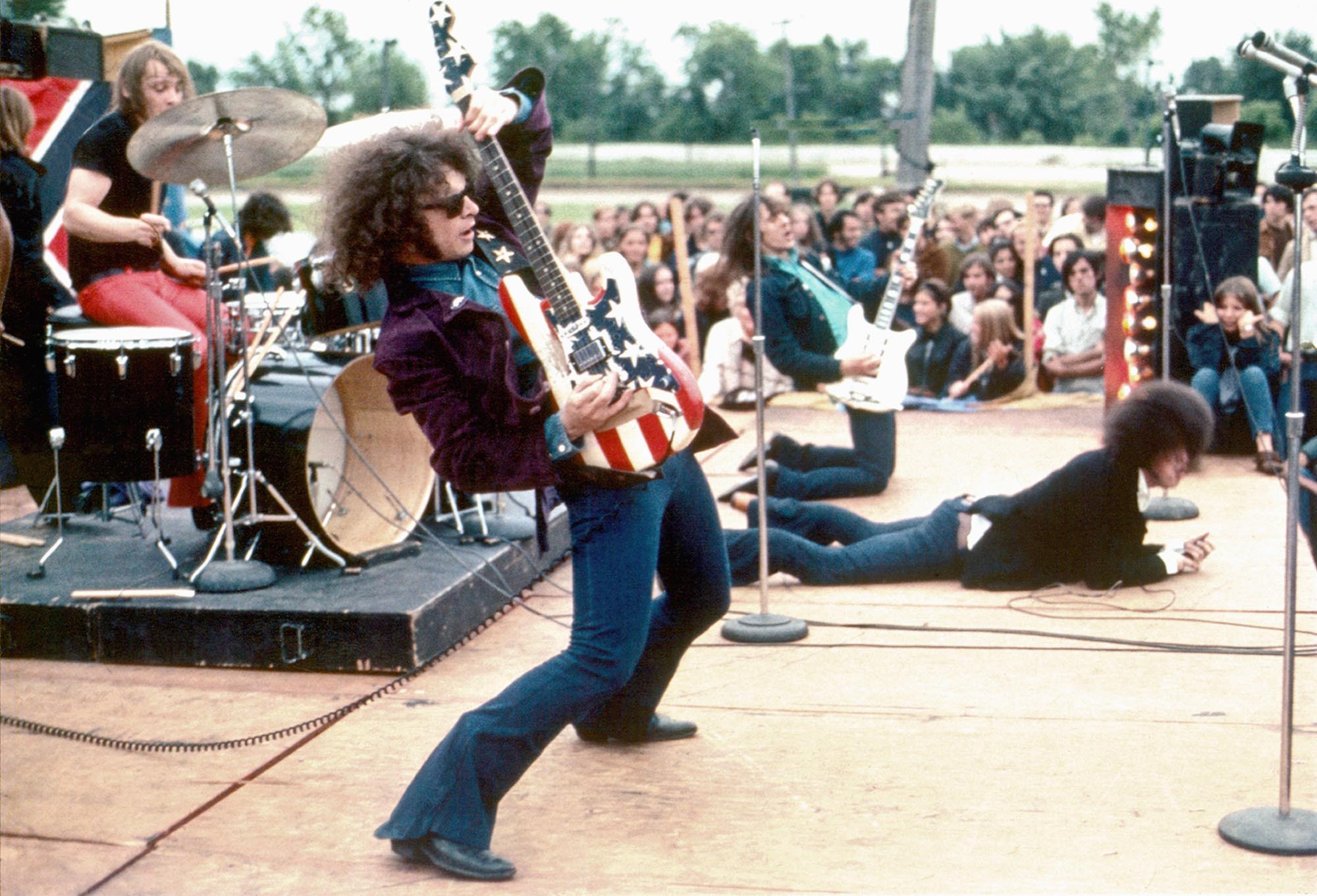 Wayne Kramer and Fred "Sonic" Smith of MC5 performing, Detroit proto-punk guitar duo
Wayne Kramer and Fred "Sonic" Smith of MC5 performing, Detroit proto-punk guitar duo
Image Credit: Leni Sinclair/Michael Ochs Archive/Getty Images
The MC5 guitar duo of Wayne Kramer and Fred “Sonic” Smith, forged in Detroit in the 1960s, functioned as a powerful engine. They blended Chuck Berry and Motown with free jazz influences, driving their high-energy jams into improvisational spaces while maintaining a strong groove. Kramer told Premier Guitar in 2018, “If you play with another guitar player long enough, you exhaust everything you know, and then you start playing what you don’t know, and you get into something good. We just found that we could play syncopated rhythm parts simultaneously, and they would lock in perfectly, or we could solo simultaneously and they’d still lock in.” Their synergistic playing and proto-punk energy place them among the top guitar players in rock history.
Key Tracks: “Looking at You,” “Poison”
Marv Tarplin
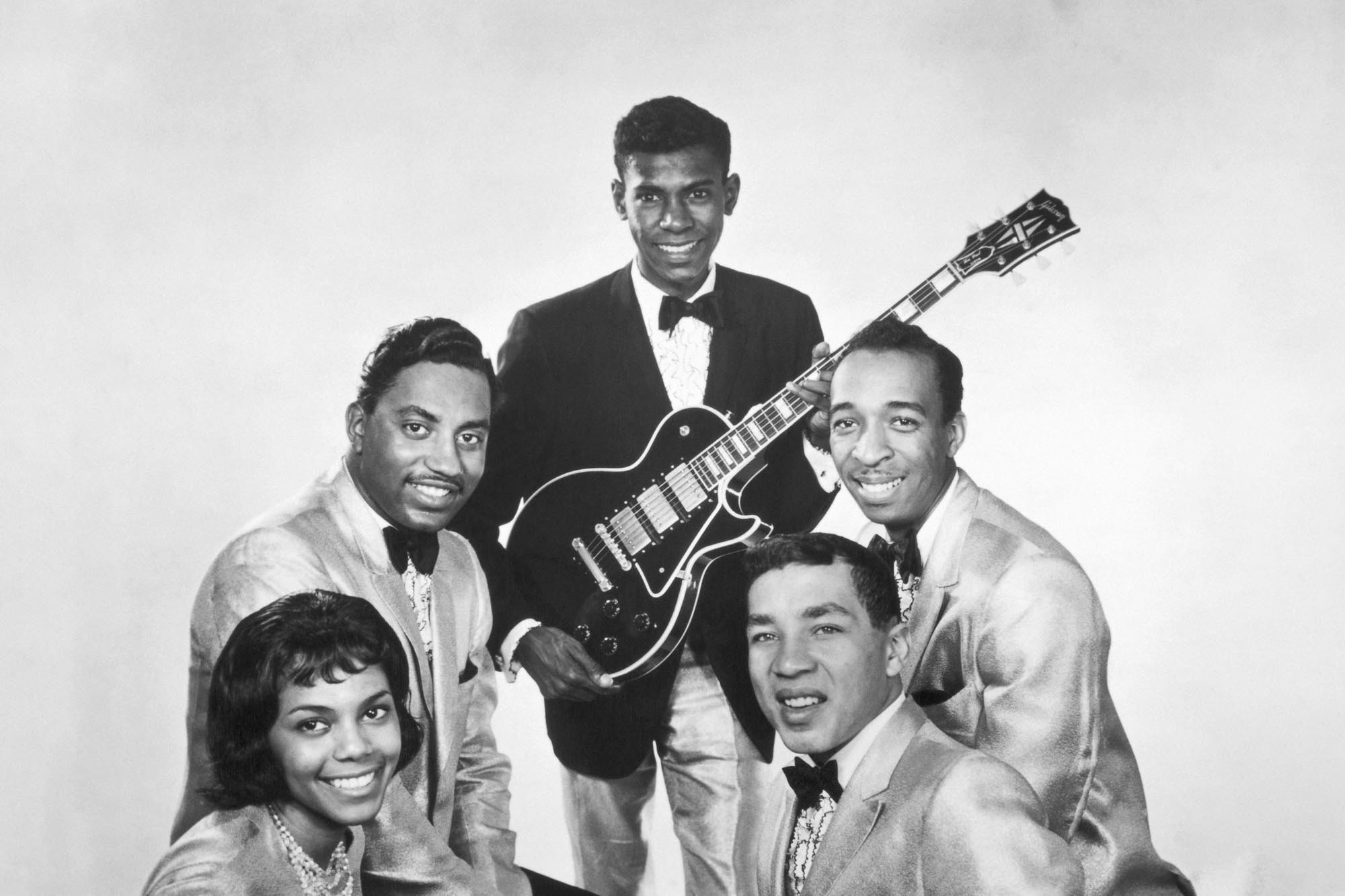 Marv Tarplin of The Miracles posing in 1962, Motown guitar innovator
Marv Tarplin of The Miracles posing in 1962, Motown guitar innovator
Image Credit: Michael Ochs Archives/Getty Images
Marv Tarplin’s guitar playing and songwriting were crucial to Smokey Robinson and the Miracles’ success. Hand-picked by Robinson in the 1960s, Tarplin’s versatility suited Motown’s demands, from driving chords on “Going to a Go-Go” to 12-string acoustic on “You Really Got a Hold on Me.” His chord exploration of “Day-O (The Banana Boat Song)” led to the Miracles’ hit “The Tracks of My Tears.” He continued working with Robinson after the Miracles, adding delicate guitar lines to Robinson’s 1979 solo hit “Cruisin’.” Tarplin’s melodic sensibility and songwriting contributions make him one of the top guitar players in Motown history.
Key Tracks: “The Tracks of My Tears,” “Cruisin’”
Joseph Spence
 Joseph Spence playing guitar, Bahamian guitar innovator
Joseph Spence playing guitar, Bahamian guitar innovator
Image Credit: Guy Droussart
In 1958, musicologists Sam and Ann Charters discovered Joseph Spence in the Bahamas. His rich guitar playing sounded like two guitarists. Sam Charters noted, “He often seemed to be improvising in the bass, the middle strings, and the treble at the same time.” Spence’s pointillistic fingerpicking across blues, spirituals, and calypso greatly influenced the folk movement. The Grateful Dead covered his “We Bid You Goodnight,” and the Beach Boys’ “Sloop John B” is indebted to Spence’s version. Spence’s unique fingerstyle and broad influence place him among the top guitar players in folk and world music.
Key Tracks: “Brownskin Girl,” “Jump in the Line”
Molly Tuttle
 Molly Tuttle performing in 2014, bluegrass guitar innovator
Molly Tuttle performing in 2014, bluegrass guitar innovator
Image Credit: Scott Dudelson/Getty Images
Molly Tuttle, a bluegrass innovator, and her band Golden Highway are making roots music history. Her flatpicking, influenced by Tony Rice, Joni Mitchell, and Clarence White, respects tradition while pushing boundaries. She was the first bluegrass act nominated for a Best New Artist Grammy, reflecting bluegrass’s evolution, which Tuttle is leading. She told Rolling Stone in January, “Our generation of bluegrass players are really pushing in some new directions. I feel lucky to be part of this scene that’s breaking down barriers.” Tuttle’s innovative approach and bluegrass mastery make her one of the top guitar players in contemporary bluegrass.
Key Tracks: ‘Take the Journey,” “El Dorado”
James Blood Ulmer
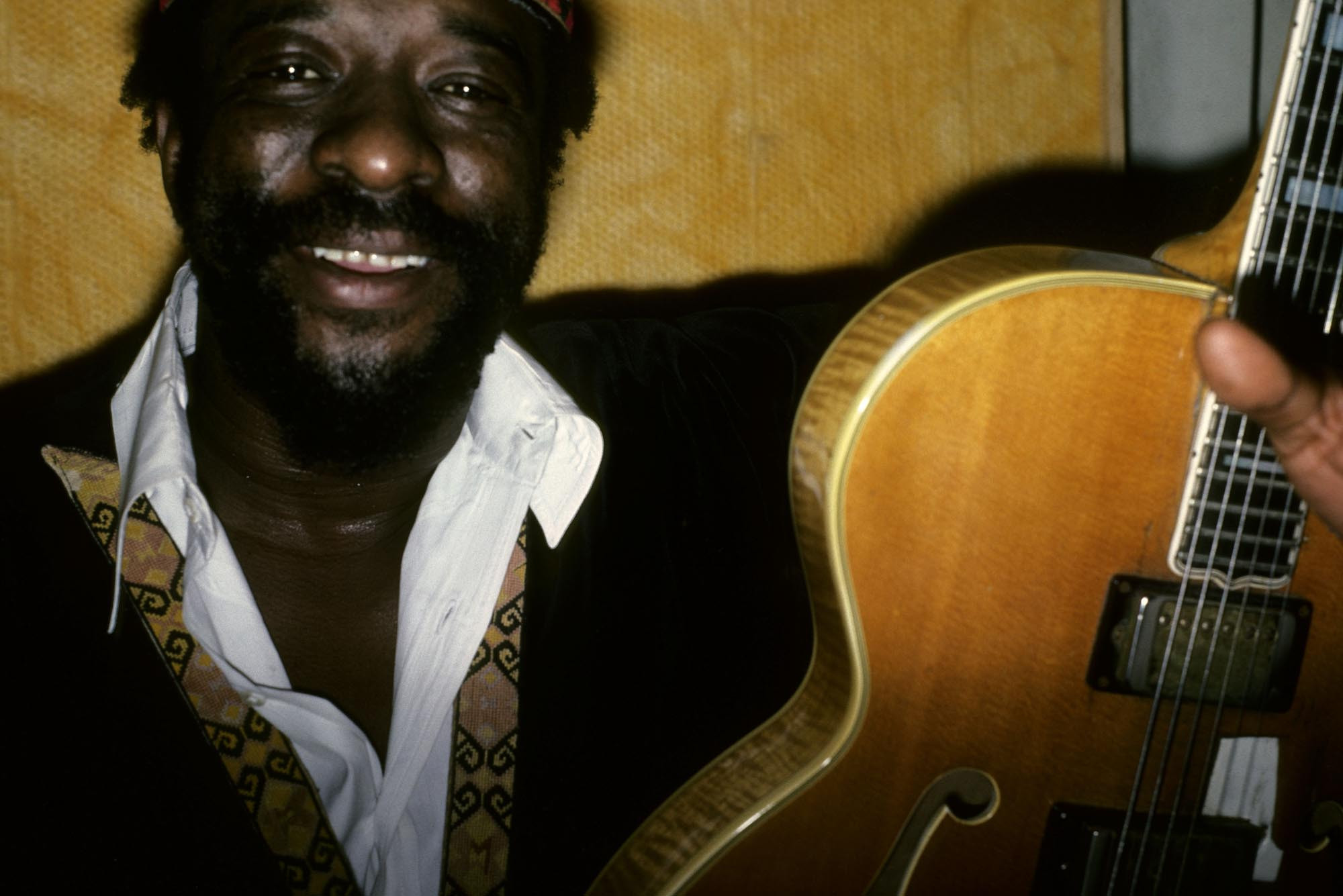 James Blood Ulmer performing, avant-garde jazz-blues guitarist
James Blood Ulmer performing, avant-garde jazz-blues guitarist
Image Credit: Peter Noble/Redferns/Getty Images
James Blood Ulmer fused soul jazz and free jazz, creating a unique guitar style. Initially playing soul jazz, then working with Ornette Coleman, Ulmer blended blues, funk, and jazz into distinctive textures. Albums like Tales of Captain Black and Odyssey influenced the 70s and 80s downtown New York experimental scene, impacting Vernon Reid and no-wave bands. Reid described Ulmer: “James Blood Ulmer is fully aware, theoretically and idiomatically — he’s just never been constrained by those concerns. He is a rock. He is unapologetically himself. He is the blues. Itself. Not its rules.” Ulmer’s genre-bending innovation and raw style place him among the top guitar players in avant-garde and jazz-blues.
Key Tracks: “Theme from Captain Black,” “Timeless”
Courtney Barnett
 Courtney Barnett performing, indie rock storyteller
Courtney Barnett performing, indie rock storyteller
Image Credit: Griffin Lotz for Rolling Stone
Courtney Barnett’s guitar playing, shifting from fingerpicking to garage-rock solos, enhances her witty songwriting. She described “Write a List of Things to Look Forward To” from Things Take Time, Take Time as sounding “like you’re driving across a highway and it’s sunny.” Her guitar work complements her songs’ themes of liberation. Her collaboration with Kurt Vile on Lotta Sea Lice showcases their dazzling guitar chemistry. Barnett’s dynamic range and storytelling through guitar place her among the top guitar players in indie rock.
Key Tracks: “Turning Green,” “Over Everything,” “Pedestrian at Best”
Glenn Tipton and K.K. Downing
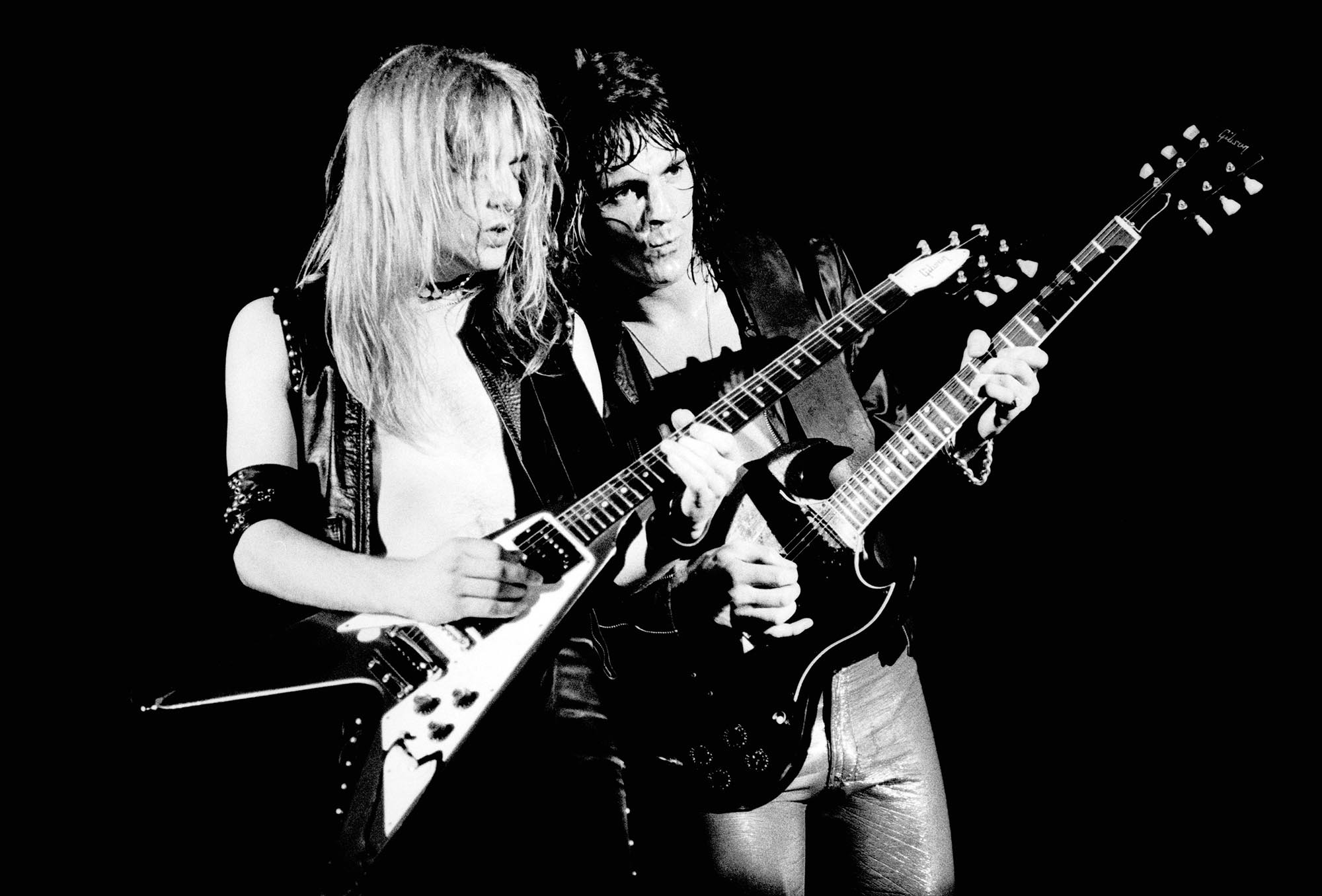 Glenn Tipton and K.K. Downing of Judas Priest performing in 1978, heavy metal twin guitar pioneers
Glenn Tipton and K.K. Downing of Judas Priest performing in 1978, heavy metal twin guitar pioneers
Image Credit: Gus Stewart/Redferns/Getty Images
Judas Priest, with guitarists K.K. Downing and Glenn Tipton, redefined heavy metal in the mid-Seventies using two guitarists. Unlike bands with rhythm and lead divisions, Tipton and Downing doubled riffs, traded solos, and used harmony leads. This template influenced Iron Maiden, Metallica, Slayer, and other two-guitar metal bands. Slayer’s Kerry King noted, “You can almost always tell that if it’s Tipton, it’s super-fucking tasty. If it’s K.K., it’s a more edgy, almost punky kind of vibe, which is a great mix.” Their pioneering twin-guitar approach makes them two of the top guitar players in heavy metal history.
Key Tracks: “Victim of Changes,” “Breaking the Law,” “The Hellion/Electric Eye”
Lzzy Hale
 Lzzy Hale of Halestorm performing, modern hard rock icon
Lzzy Hale of Halestorm performing, modern hard rock icon
Image Credit: Tim Mosenfelder/Getty Images
Lzzy Hale, known for her powerful voice, is also a formidable guitarist with an aggressive rhythmic style that complements Halestorm’s lead guitarist Joe Hottinger. Hale can shred, mimicking vocal melodies on guitar, and is influential in 21st-century guitar rock. Gibson named her their first female brand ambassador and created a signature Explorer model for her. Hale told Rolling Stone, “The people at Gibson keep telling me the demographic that buys the most electric guitars right now are female. The wave is coming whether anybody likes it or not.” Hale’s dual talents and influence make her one of the top guitar players in modern hard rock.
Key Tracks: “I Miss the Misery,” “The Steeple”
Thomas McClary
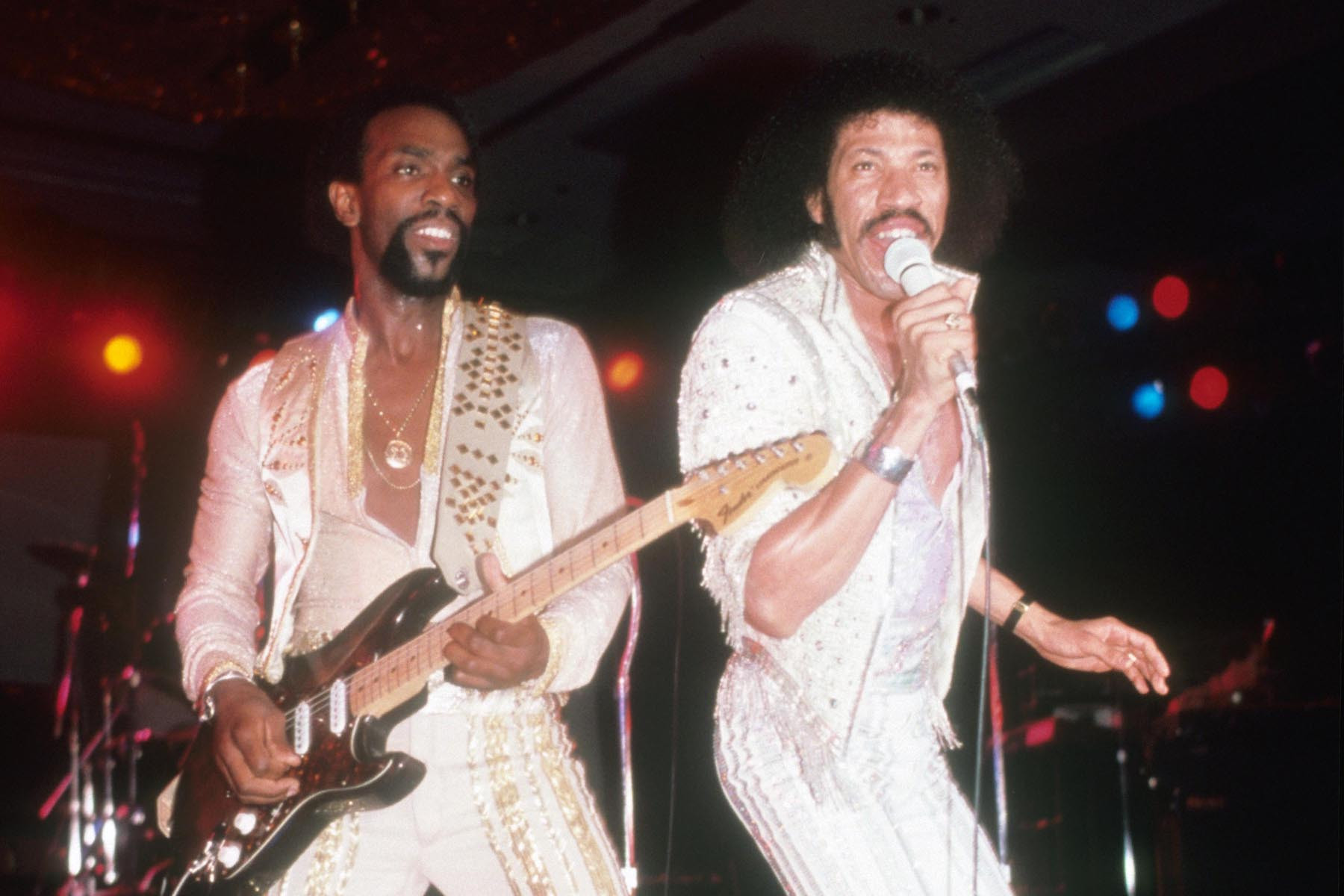 Thomas McClary of Commodores in 1978, funk-soul crossover guitarist
Thomas McClary of Commodores in 1978, funk-soul crossover guitarist
Image Credit: Alamy
Thomas McClary of the Commodores integrated funk, soul, gospel, and country, appealing to diverse audiences. His guitar work, blending glam and blues grit on songs like “Easy,” shaped 80s crossover sound. McClary cited influences like Santana, Jimi Hendrix, Albert King, James Taylor, and Crosby, Stills, Nash, and Young, aiming for a “raunchy, raw, authentic sound that could be appealing to everybody.” McClary’s genre-blending approach and crossover success make him one of the top guitar players in funk and soul.
Key Tracks: “Easy,” “Brick House”
Steve Hackett
Image Credit: Richard E. Aaron/Redferns/Getty Images
Steve Hackett joined Genesis in 1971, replacing Anthony Phillips, and quickly impacted their sound. He introduced two-hand tapping, featured on 1971’s Nursery Crime, predating Eddie Van Halen’s wider popularization. He created the epic solo on “Firth of Fifth,” a prog-rock masterpiece. Leaving in 1977 for a solo career, Hackett stated, “I’m very happy to have freed up guitarists to play dazzling solos, and come up with things that would only be dreamt up at one time.” Hackett’s innovative techniques and prog-rock contributions place him among the top guitar players in progressive rock.
Key Tracks: “Horizons,” “Firth of Fifth”
Kurt Vile
 Kurt Vile in studio in 2015, slacker-virtuoso guitarist
Kurt Vile in studio in 2015, slacker-virtuoso guitarist
Image Credit: Paul Bergen/Redferns/Getty Images
Kurt Vile’s relaxed persona belies his serious guitar skills, blending drones and melodic solos, influenced by his early banjo playing. He told guitar.com in 2018, “Banjos are in an open tuning, and they’ve got that high drone string. It’s not like you’d even think about that when you’re playing as a kid, but I came to really like that ethereal drone.” He incorporates diverse influences into his subtly virtuosic style. Vile’s unique blend of laid-back style and guitar mastery makes him one of the top guitar players in indie rock.
Key Tracks: “Pretty Pimpin,” “Wakin on a Pretty Day”
Keiji Haino
 Keiji Haino posing, Japanese noise-guitar innovator
Keiji Haino posing, Japanese noise-guitar innovator
Image Credit: Alamy
Keiji Haino’s performances are intense explorations of noise and catharsis, blurring the line between playing and sonic exorcism. In groups like Aihiyo, his work ranges from soft chords to ear-splitting noise. He told Vice Japan, “People practice really hard because they want people to check them out. And then they say it’s improvisation. That drives me nuts.” Haino’s extreme dynamics and improvisational approach place him among the top guitar players in noise and experimental music.
Key Tracks: “A Shredded Coiled Cable Within This Cable Sincerity Could Not be Contained,” “Why in the Courtesy of the Prey Always Confused With the Courtesy of the Hunters Pt. 1”
Lucy Dacus
 Lucy Dacus performing, understated indie rock guitarist
Lucy Dacus performing, understated indie rock guitarist
Image Credit: Griffin Lotz for Rolling Stone
For Lucy Dacus, guitar is as vital as her voice, though her playing is often understated. From the rhythm part on “I Don’t Wanna Be Funny Anymore” to her work in boygenius, Dacus’ guitar arrangements are key to her music. Live performances of “Night Shift” begin quietly with her strumming alone, building with lead guitarist Jacob Blizard to a cathartic climax. Dacus’ subtle but crucial guitar work makes her one of the top guitar players in contemporary indie rock.
Key Tracks: “Night Shift,” “I Don’t Wanna Be Funny Anymore”
José Feliciano
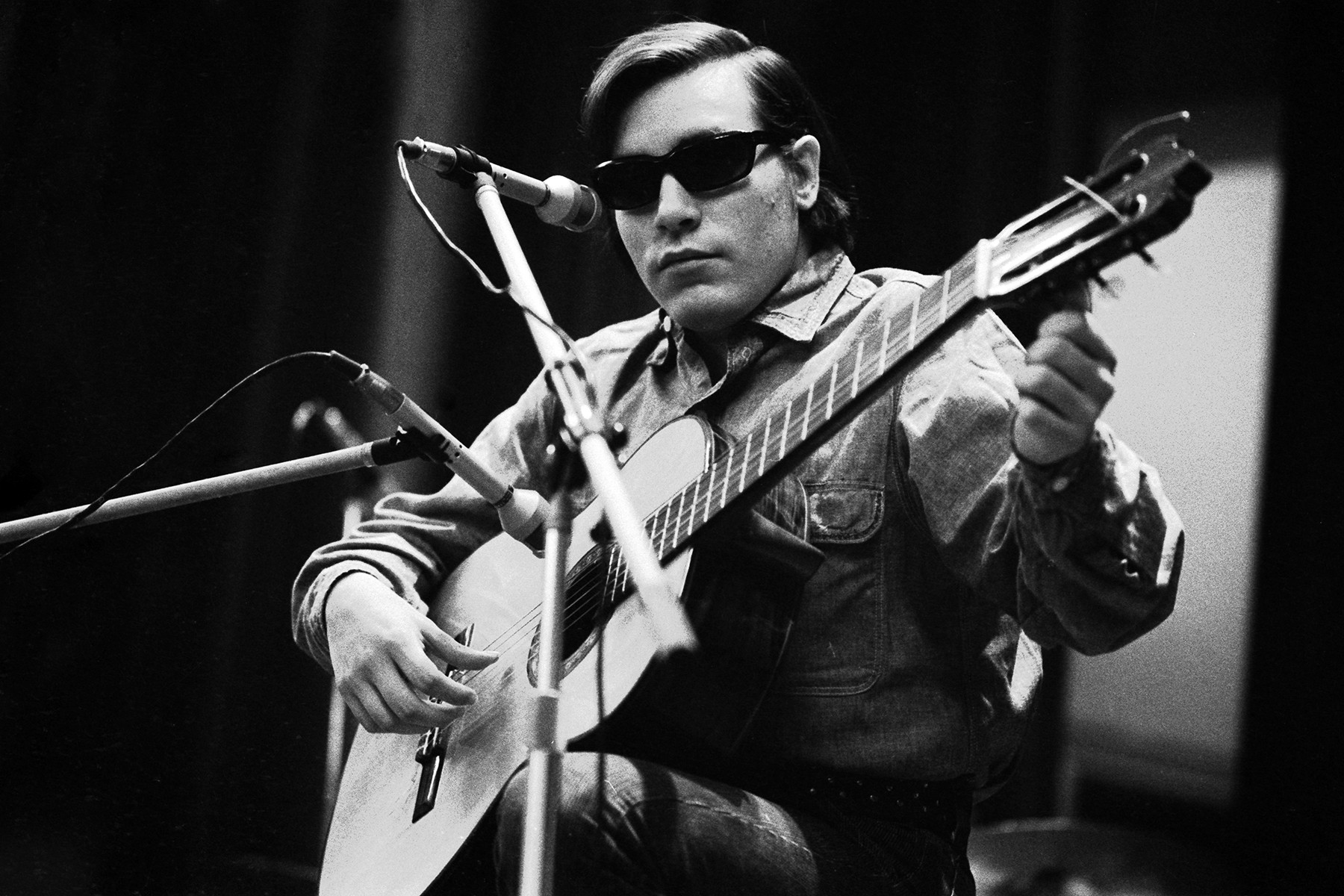 José Feliciano performing in 1973, acoustic guitar virtuoso
José Feliciano performing in 1973, acoustic guitar virtuoso
Image Credit: Evening Standard/Hulton Archive/Getty Images
José Feliciano, beyond his holiday hit “Feliz Navidad,” is an acoustic guitar virtuoso. Blind since birth, he became a guitar prodigy in his teens, blending boleros and folk with rock, jazz, soul, and bossa nova. His 1968 reinvention of “California Dreamin’” and his fiery “Light My Fire” changed 60s pop rock. Feliciano’s genre-bending style and virtuosity place him among the top guitar players in pop and Latin music.
Key Tracks: “Light My Fire,” “Here, There and Everywhere”
Nick Zinner
 Nick Zinner posing, Yeah Yeah Yeahs' dance-punk guitarist
Nick Zinner posing, Yeah Yeah Yeahs' dance-punk guitarist
Image Credit: Sacha Lecca for Rolling Stone
Yeah Yeah Yeahs aimed for a “trashy, punky, grimy” sound. Nick Zinner’s style blends dance-punk, Van Halen panache, Rowland S. Howard’s intensity, and Johnny Marr’s grandeur into catchy riffs. His minimal guitar work carries deep emotion, from the longing of “Maps” to the tension of “Heads Will Roll.” Zinner’s distinctive and emotive style makes him one of the top guitar players in dance-punk and indie rock.
Key Tracks: “Y Control,” “Maps,” “Gold Lion”
Kaki King
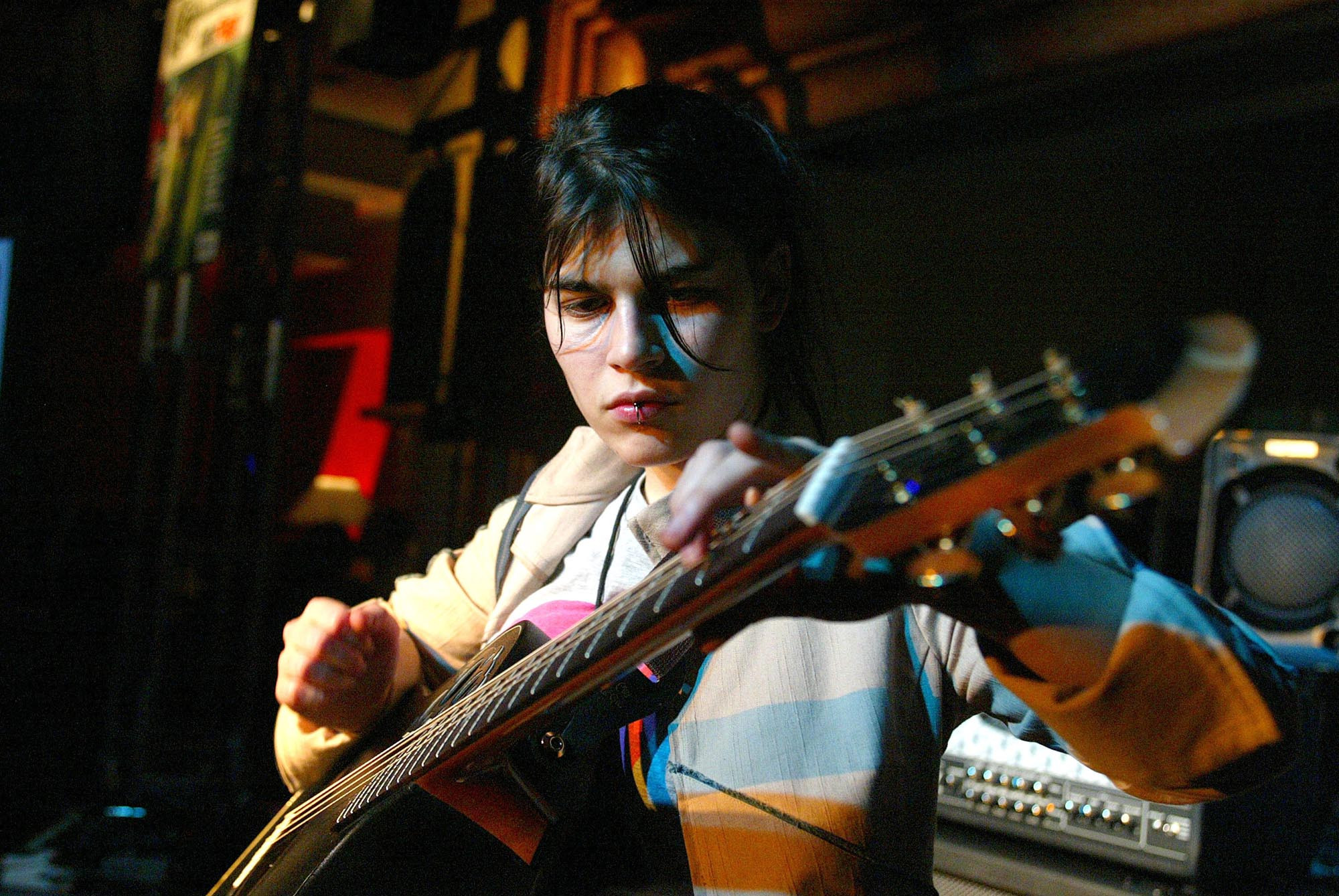 Kaki King performing, acoustic guitar innovator
Kaki King performing, acoustic guitar innovator
Image Credit: Jeffrey Mayer/WireImage
Kaki King is a sonic adventurer, blending Preston Reed and John Cage approaches to acoustic guitar. She experiments with tunings, treated instruments, electronic loops, fingerstyle, tapping, and percussive techniques. She told Premier Guitar in 2011, “I’ll think, ‘Let’s see what happens if I lower this string here and raise that one there.’ When you tune your guitar differently, all of a sudden your fingers and your mind have to be creative again because you’re not relying on shapes and places that sound good or feel familiar. You have to explore the fretboard to find new fingerings and sounds, and that leads to new discoveries.” King’s experimental approach and innovative techniques place her among the top guitar players in acoustic and experimental music.
Key Tracks: “Playing With Pink Noise,” “Skimming the Fractured Surface to a Place of Endless Light”
Gary Clark Jr.
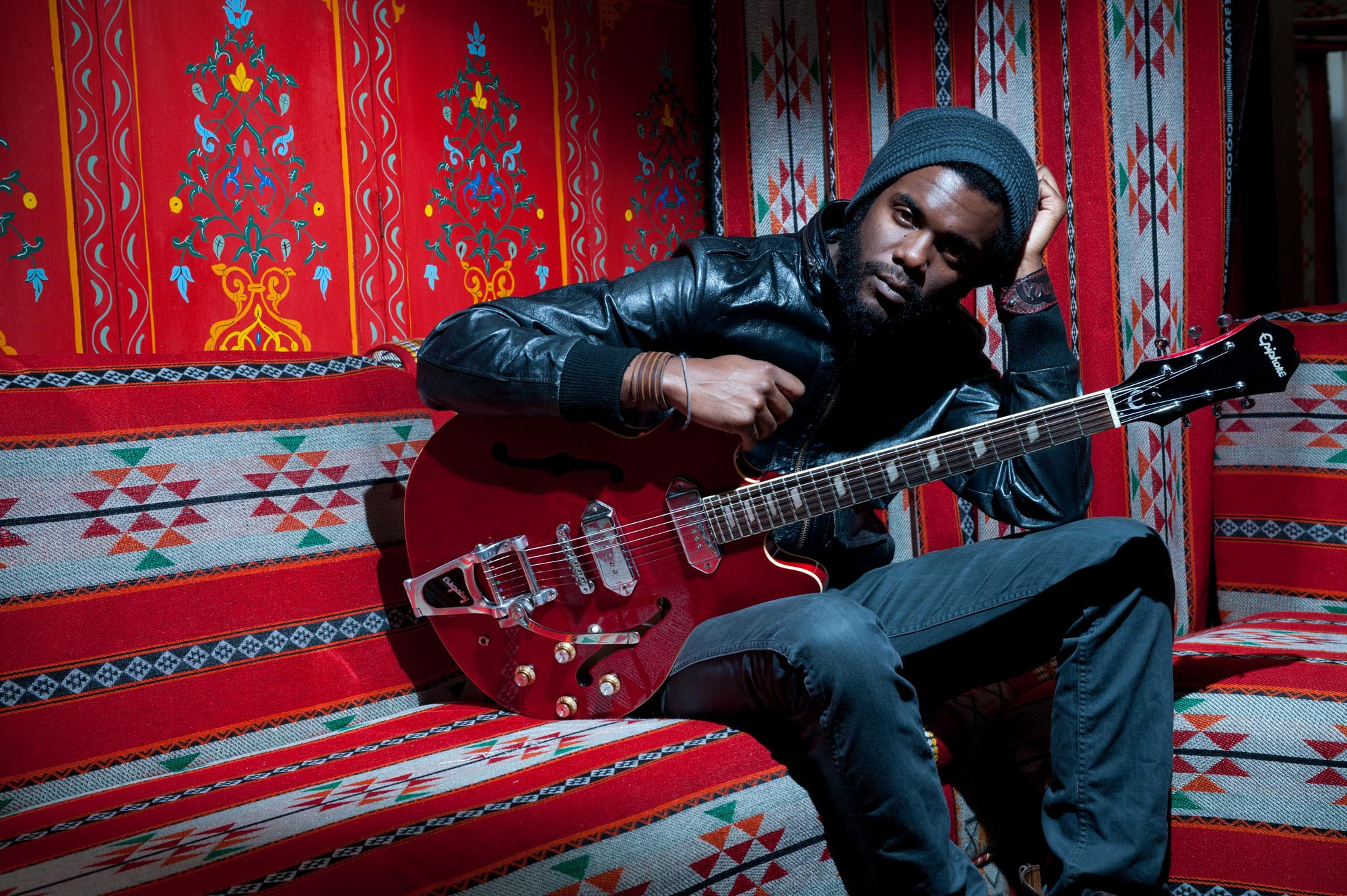 Gary Clark Jr. posing in 2012, blues-rock fusion guitarist
Gary Clark Jr. posing in 2012, blues-rock fusion guitarist
Image Credit: Rob Monk/Guitarist Magazine/Future/Getty Images
Gary Clark Jr., initially seen as a blues heir, has expanded his style beyond blues-rock, incorporating soul, funk, grunge, and hip-hop, collaborating with diverse artists. He told Rolling Stone in 2014, “I don’t think that I’m reaching my full potential if I just do what people expect of me. I love to play, and I love to experiment, and there are a lot more roads to explore. I don’t know if I want to get too far off the path — I don’t want to get lost in the forest — but I like to wander out a bit and adventure.” Clark Jr.’s genre-blending approach and guitar virtuosity make him one of the top guitar players in contemporary blues and rock.
Key Tracks: “This Land,” “Grinder”
Amadou Bagayoko
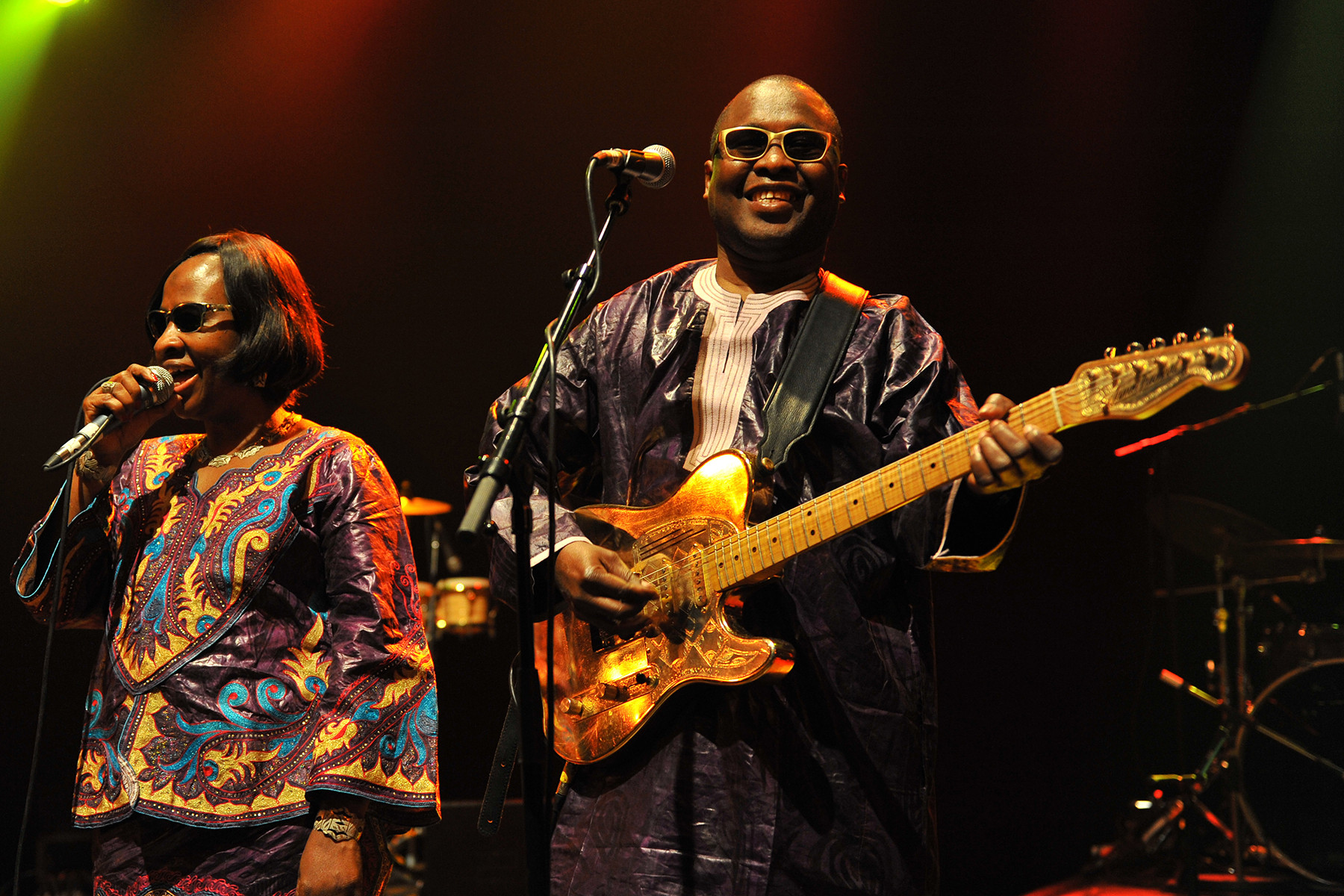 Amadou Bagayoko of Amadou & Mariam performing in 2012, Malian guitar innovator
Amadou Bagayoko of Amadou & Mariam performing in 2012, Malian guitar innovator
Image Credit: C Brandon/Redferns/Getty Images
Amadou Bagayoko of Amadou & Mariam, met Mariam Doumbia at an institute for the blind in Mali. Their bright duets, led by Amadou’s guitar, gained international recognition. Bagayoko said, “People are often surprised when we explain how much we were influenced by Western pop music. I grew up listening to records by Rod Stewart, Led Zeppelin, James Brown, Crosby, Stills, and Nash, Eric Clapton, Jeff Beck, Pink Floyd, Stevie Wonder … That’s because they were the only records we had in Mali!” Bagayoko’s cross-cultural influences and melodic guitar style place him among the top guitar players in world music.
Key Tracks: “Djanfa,” “Ce N’est Pas Bon”
Justin Broadrick
 Justin Broadrick on set of Godflesh, industrial metal guitar innovator
Justin Broadrick on set of Godflesh, industrial metal guitar innovator
Image Credit: Karjean Levine/Getty Images
Justin Broadrick created a unique guitar lexicon in industrial metal (Godflesh), grindcore (Napalm Death), and post-metal (Jesu). His riffs and textures in Godflesh added humanity to mechanical rhythms. In Napalm Death, he pioneered grindcore’s sound with extreme distortion. In Jesu, he layered noise into beautiful soundscapes. Broadrick’s distinctive and influential guitar sounds place him among the top guitar players in metal and experimental music.
Key Tracks: “Like Rats,” “Silver,” “Scum”
Hugh McCracken
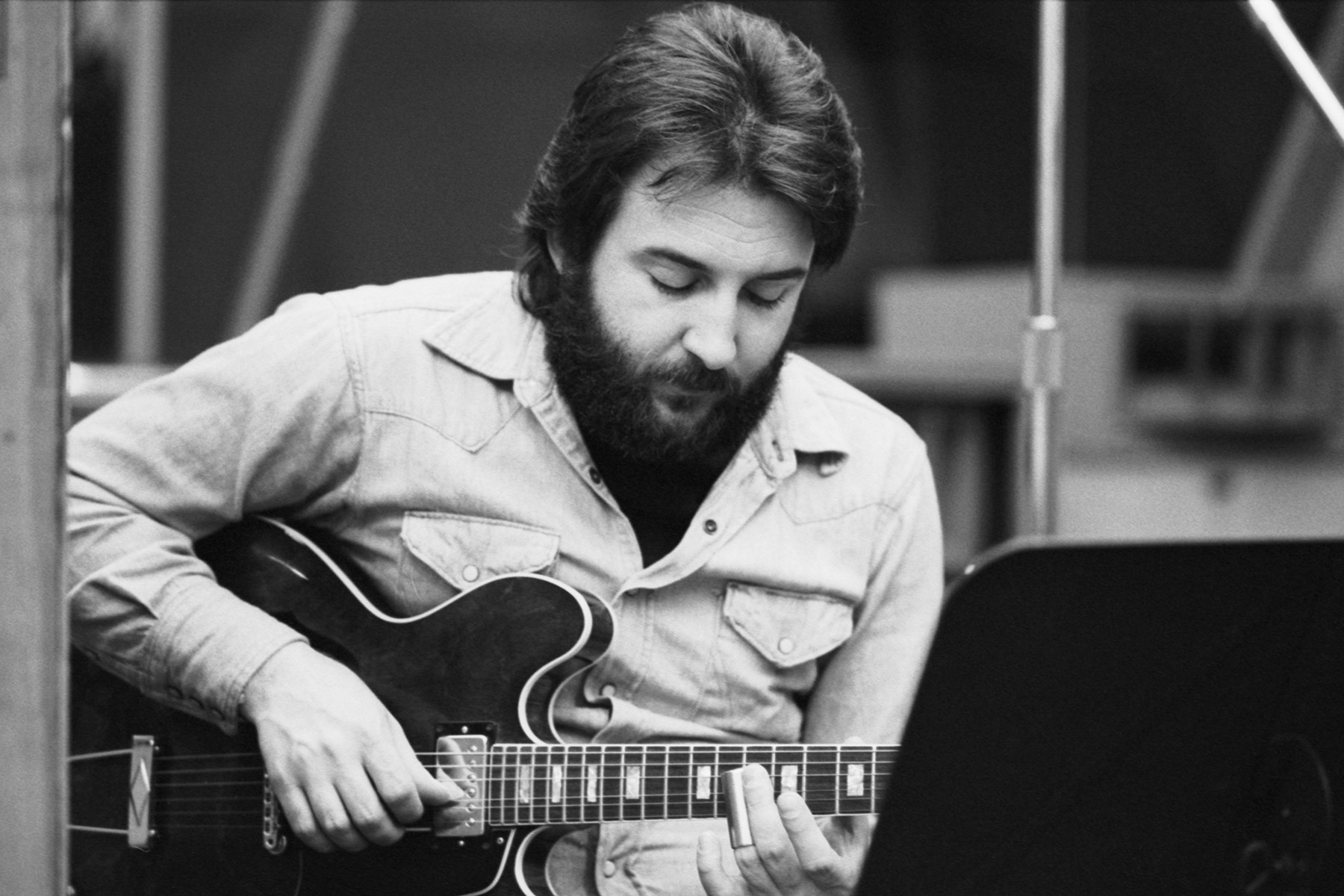 Hugh McCracken posing in 2010, session guitar master
Hugh McCracken posing in 2010, session guitar master
Image Credit: David Gahr/Getty Images
Hugh McCracken, an East Coast session guitarist, contributed tasteful guitar parts to countless classics. His piercing lead is on Steely Dan’s “Hey Nineteen,” his lick on Van Morrison’s “Brown Eyed Girl,” and acoustic guitar on Roberta Flack’s “Killing Me Softly With His Song.” He enriched Paul Simon’s “50 Ways to Leave Your Lover,” Alicia Keys’ “If I Ain’t Got You,” and John Lennon’s “I’m Losing You.” McCracken, content with studio work, declined Paul McCartney’s Wings offer. McCracken’s subtle yet iconic guitar parts make him one of the top session guitar players of all time.
Key Tracks: “Hey Nineteen,” “Killing Me Softly With His Song”
Eric Johnson
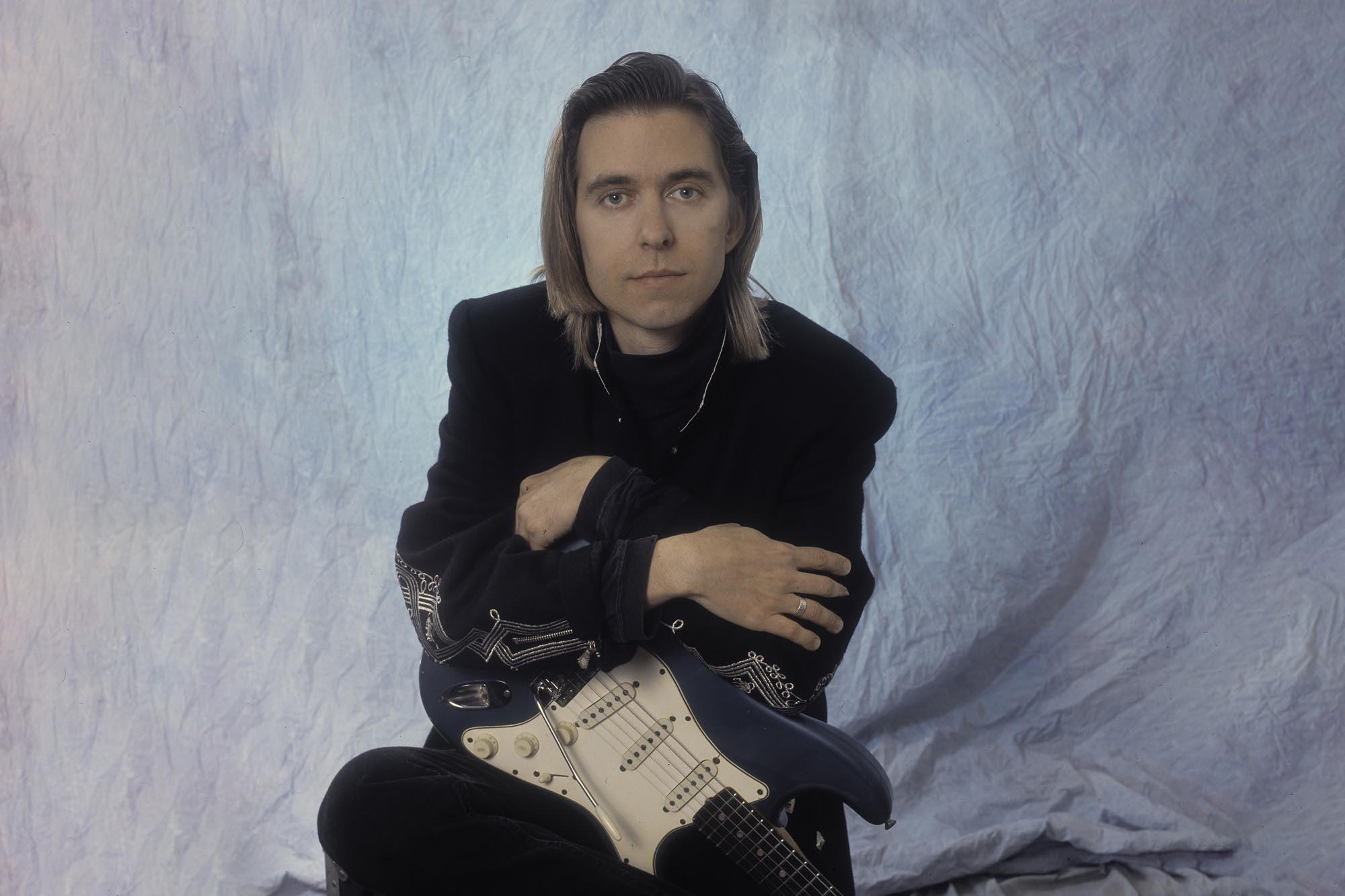 Eric Johnson posing in 1991, guitarist's guitarist
Eric Johnson posing in 1991, guitarist's guitarist
Image Credit: Paul Natkin/Getty Images
Eric Johnson, an Austin-born technician, is admired more by fellow guitarists. Steve Morse called him “so good it’s ridiculous,” Stevie Ray Vaughan deemed him “one of my favorite guitarists,” and Billy Gibbons exclaimed, “Damn, that guy can play!” A fusion guitarist leaning towards rock, he rose in Austin’s 70s scene but faced career setbacks. His 1990 instrumental album Ah Via Musicom went platinum, and he’s known for guitar collaborations like G3 with Satriani and Vai. Johnson’s technical brilliance and fusion style place him among the top guitar players admired by musicians.
Key Tracks: “Cliffs of Dover,” “Benny Man’s Blues”
Lynn Taitt
 Lynn Taitt, creator of rocksteady guitar
Lynn Taitt, creator of rocksteady guitar
Image Credit: Federal Records
Lynn Taitt, born in Trinidad, shaped Jamaican rocksteady guitar. His playing on early rocksteady recordings like Hopeton Lewis’ “Take It Easy” and Derrick Morgan’s “Tougher Than Tough” defined the genre. When Ernest Ranglin moved to England in 1964, Taitt became Jamaica’s top session guitarist. His work on Desmond Dekker’s “007 (Shanty Town)” is iconic. Though active briefly before moving to Canada in 1968, his influence is immense, with his student Hux Brown developing Taitt’s style into reggae guitar. Taitt’s foundational role in rocksteady and reggae makes him one of the top guitar players in Jamaican music history.
Key Tracks: “007 (Shanty Town),” “Take It Easy”
Grant Green
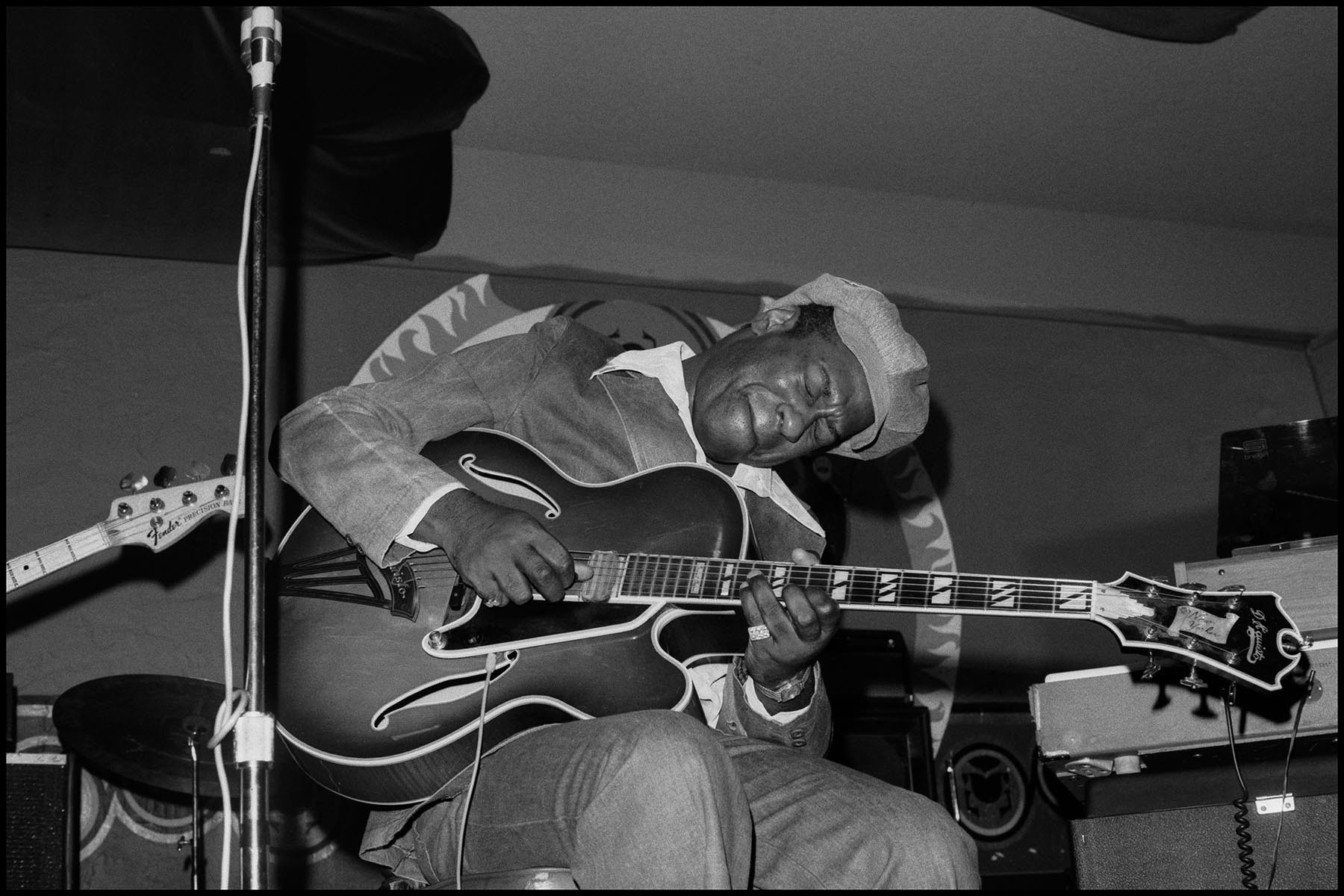 Grant Green performing in 1975, soul jazz guitar pioneer
Grant Green performing in 1975, soul jazz guitar pioneer
Image Credit: Janet Fries/Getty Images
Grant Green, from hard bop, became a soul-jazz pioneer. A Charlie Parker fan, his Blue Note debut was in 1960, followed by a stellar five-year run including Idle Moments. He explored Latin jazz on 1964’s Matador. Green died at 43 in 1979, but his influence persists, especially in hip-hop, sampled on classics from A Tribe Called Quest to Kendrick Lamar. Green’s cool grooves and hip-hop influence place him among the top guitar players in jazz and beyond.
Key Tracks: “Idle Moments,” “Jean De Fleur,” “On Green Dolphin Street”
Vince Gill
 Vince Gill posing, country guitar and vocal legend
Vince Gill posing, country guitar and vocal legend
Image Credit: Beth Gwinn/Redferns/Getty Images
Vince Gill, celebrated for his vocals, is also a lethal guitarist. Beyond chicken picking and twang on hits like “Liza Jane,” he honors California country guitarists on 2013’s Bakersfield. Gill has guested on albums for Miranda Lambert, Emmylou Harris, and Dolly Parton. Touring with the Eagles since Glenn Frey’s death, he’s a harmony vocalist and guitar virtuoso. Gill’s dual talents and country guitar mastery make him one of the top guitar players in country music.
Key Tracks: “Liza Jane,” “Oklahoma Borderline”
Garry ‘Diaper Man’ Shider
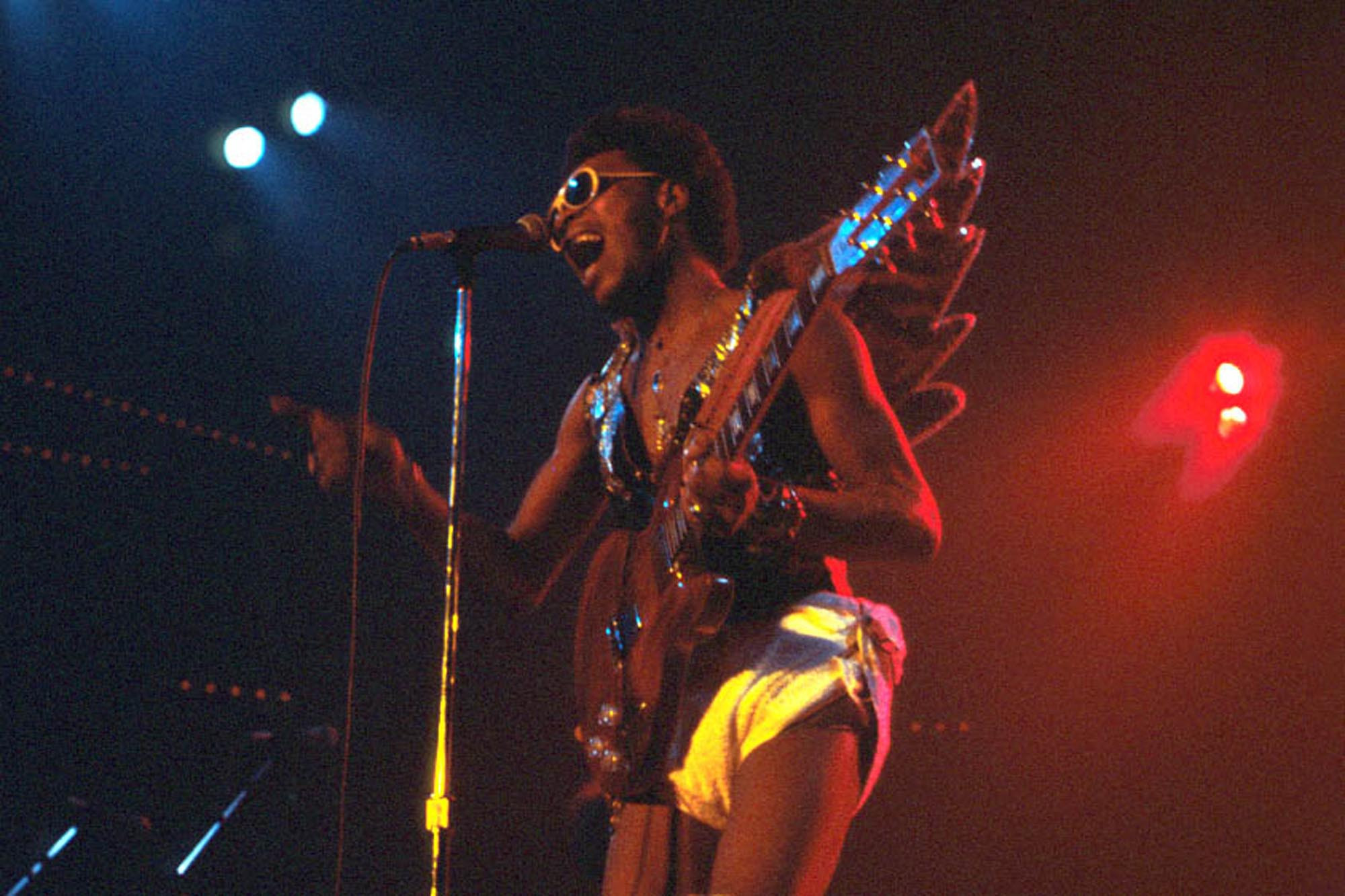 Garry 'Diaper Man' Shider of Parliament performing in 1977, funk guitar innovator
Garry 'Diaper Man' Shider of Parliament performing in 1977, funk guitar innovator
Image Credit: Michael Ochs Archives/Getty Images
Garry Shider of Parliament/Funkadelic, known as “Diaper Man” for his stage attire, said, “God loves babies and fools. I’m both.” Celebrated for psychedelic leads on jams like “Cosmic Slop,” Shider was also a rhythm guitar master on “One Nation Under a Groove” and “Atomic Dog,” both co-written by him. Also known as “Starchild” in Bootsy’s Rubberband and music director for P-Funk All Stars, his post-P-Funk work included collaborations with Paul Schaffer and the Black Crowes. Shider’s funk guitar innovations and stage persona make him one of the top guitar players in funk music history.
Key Tracks: “Cosmic Slop,” “One Nation Under a Groove”
